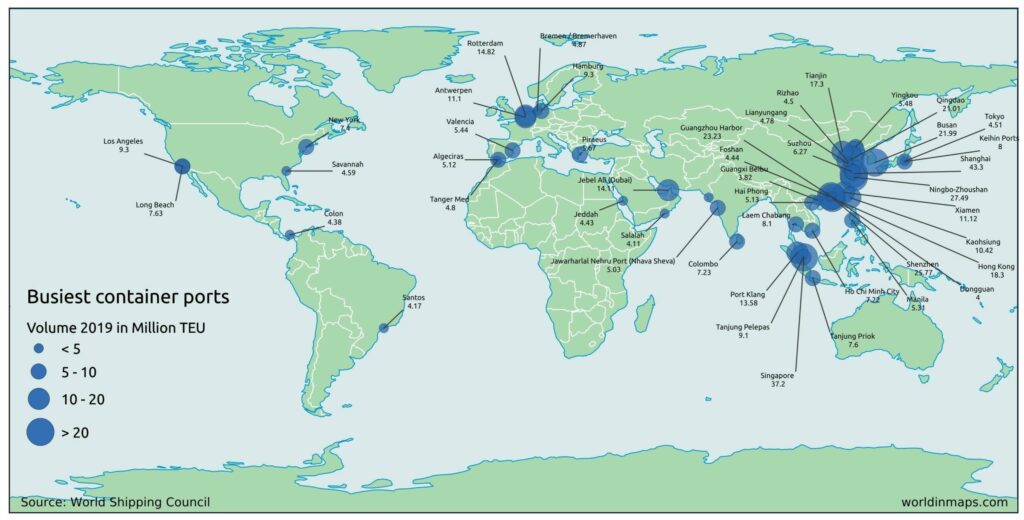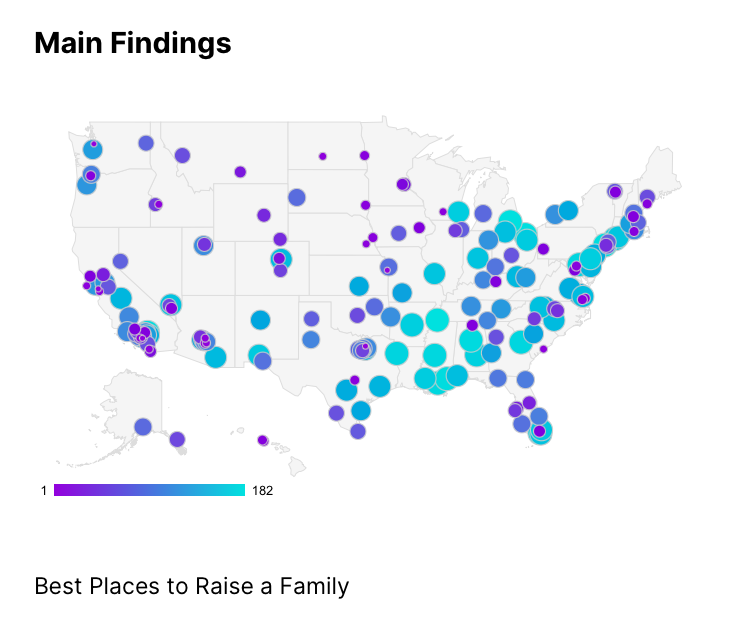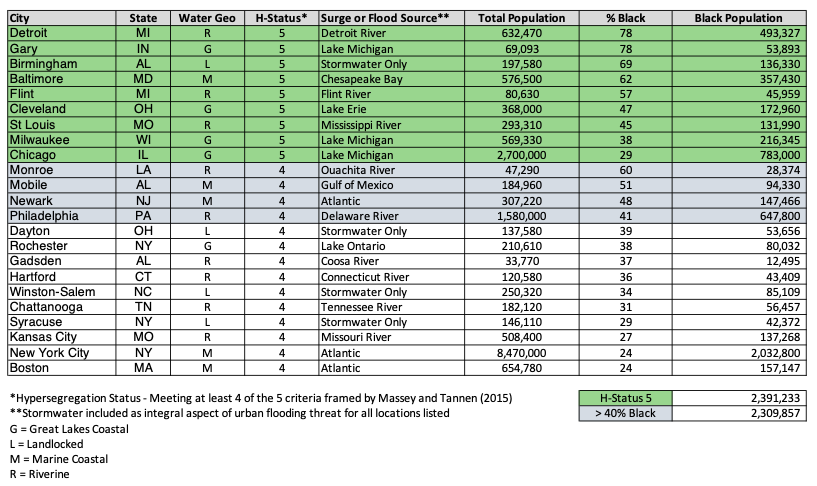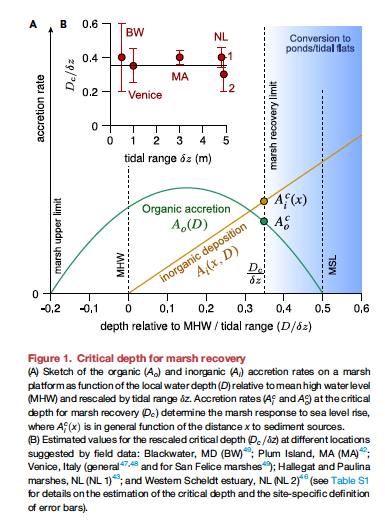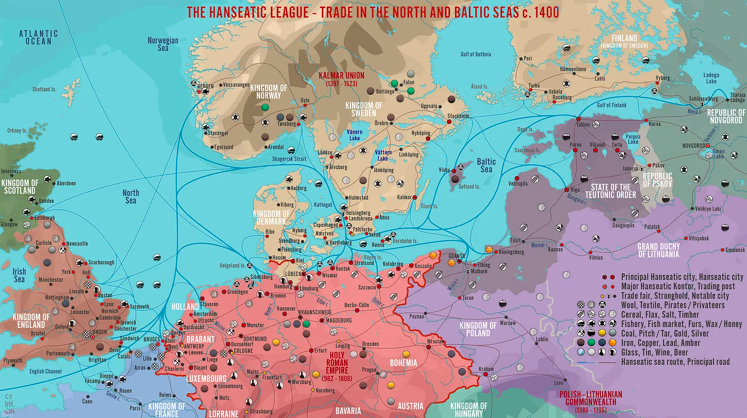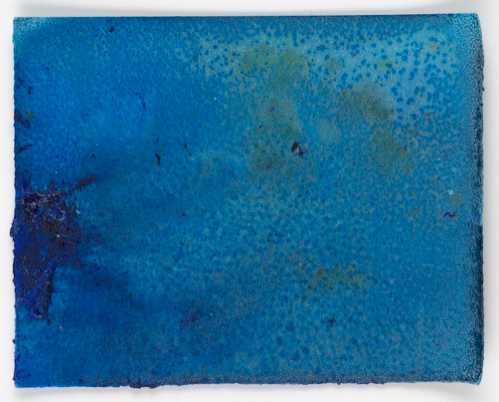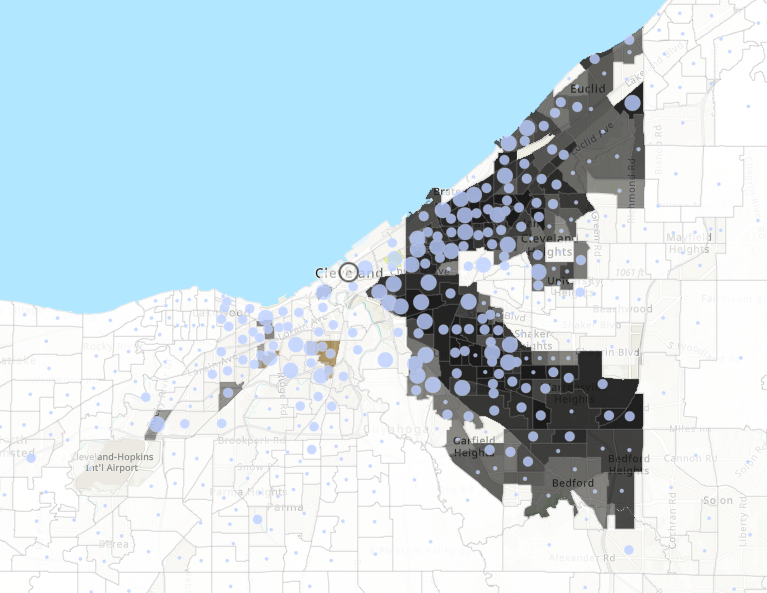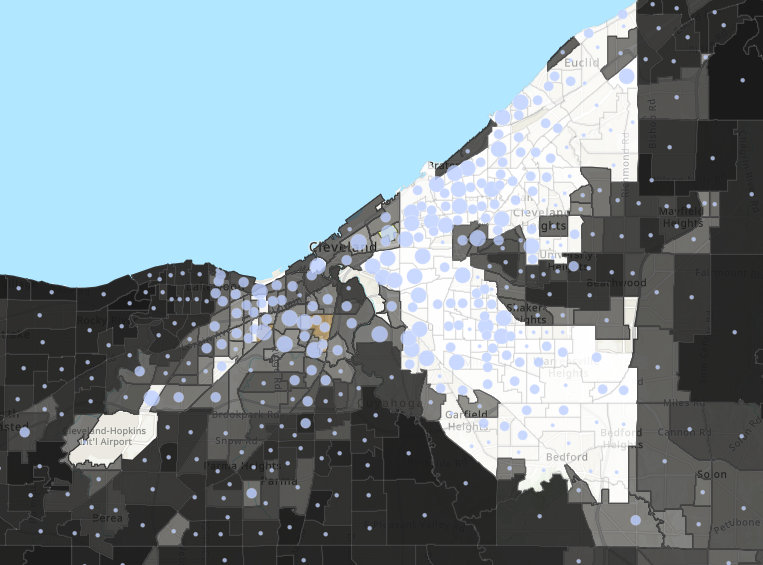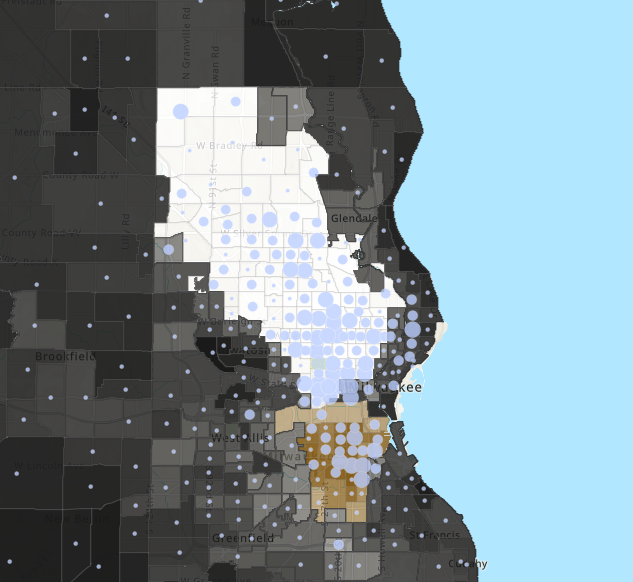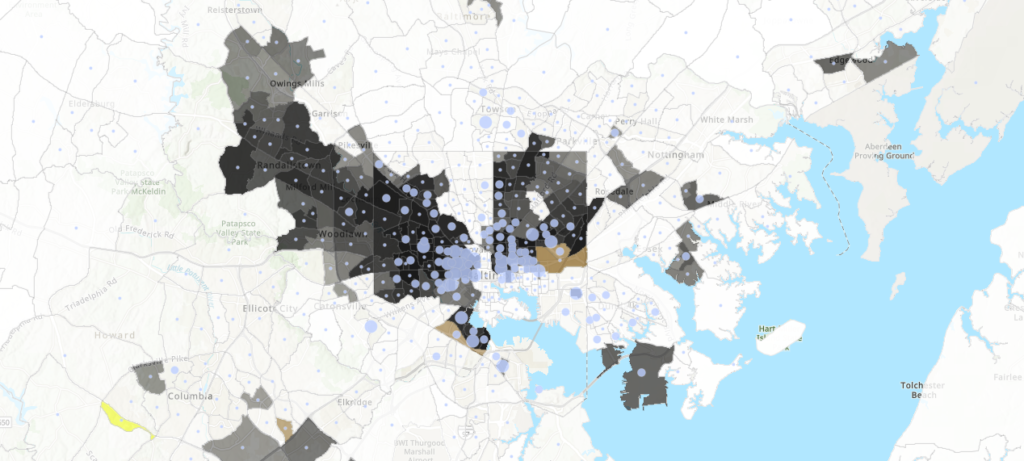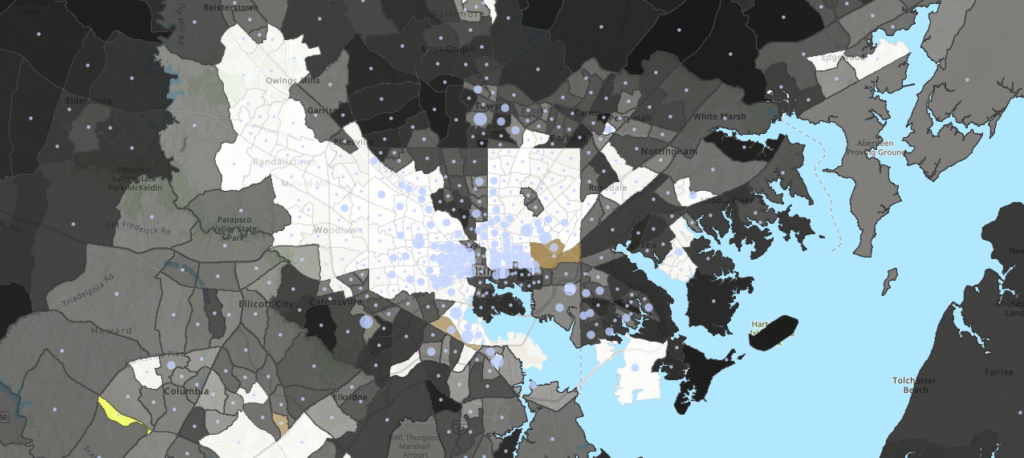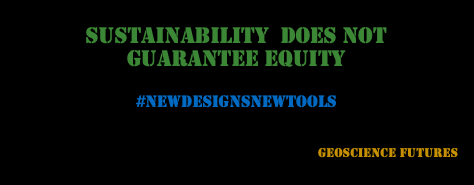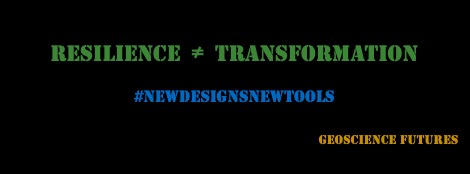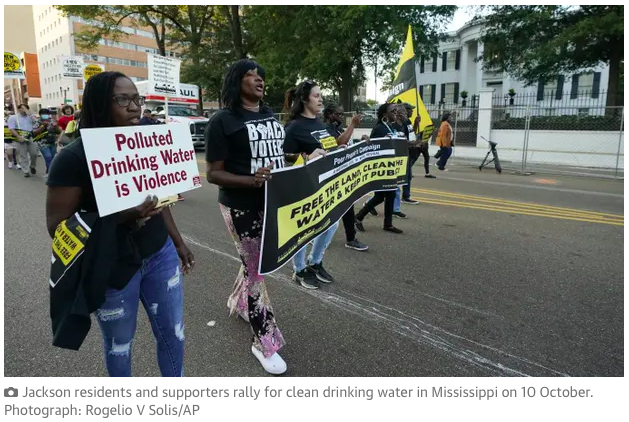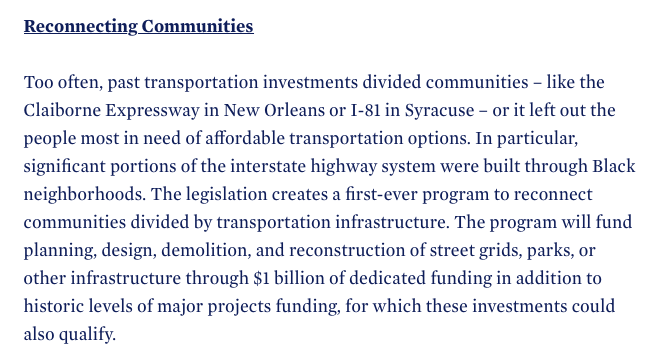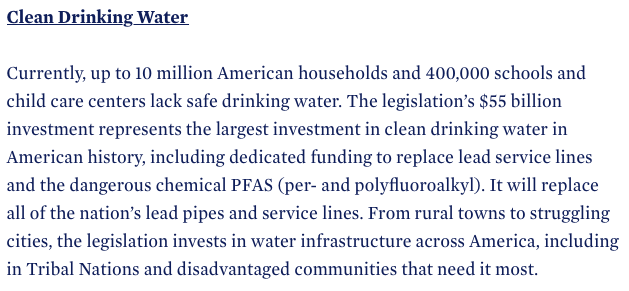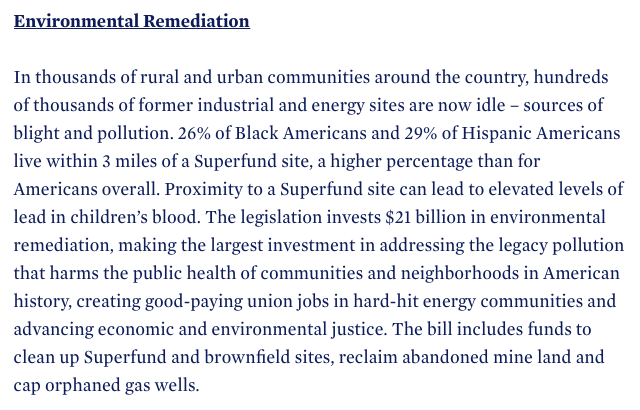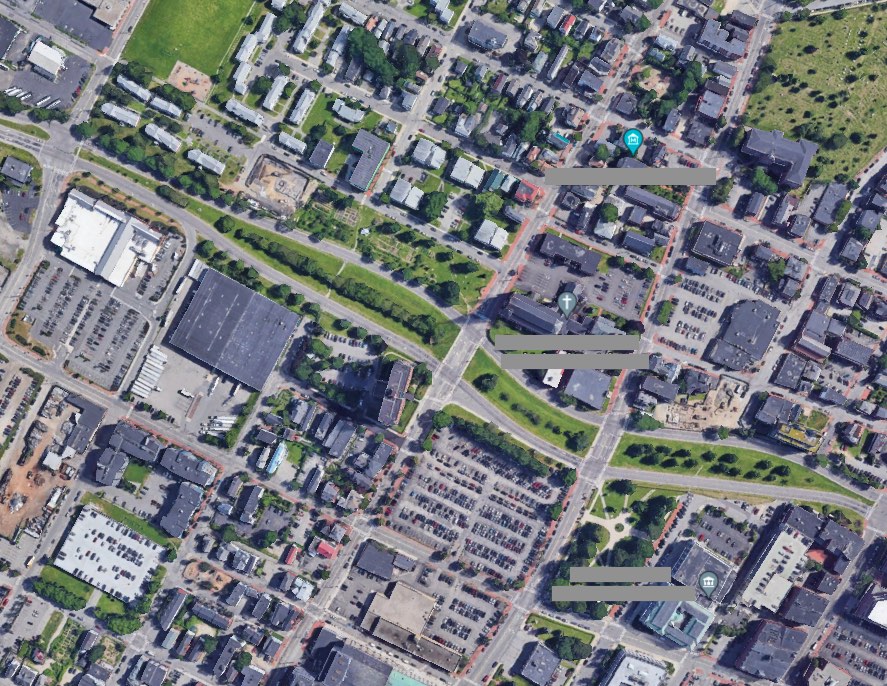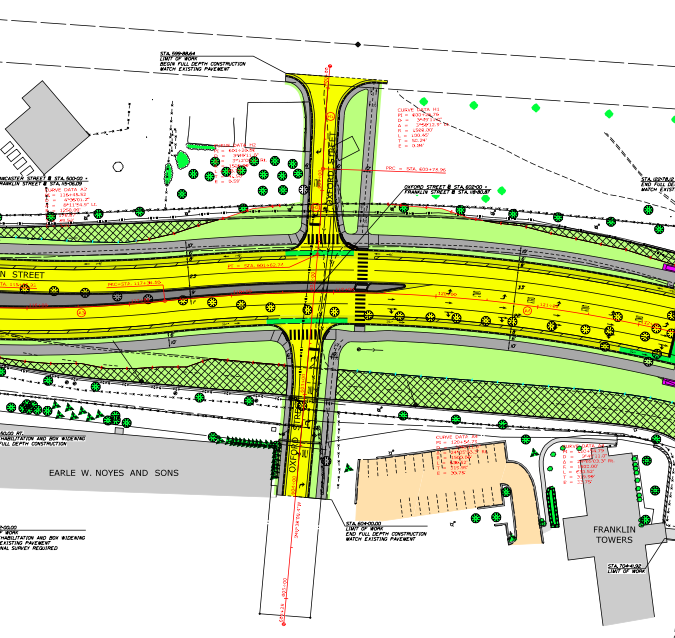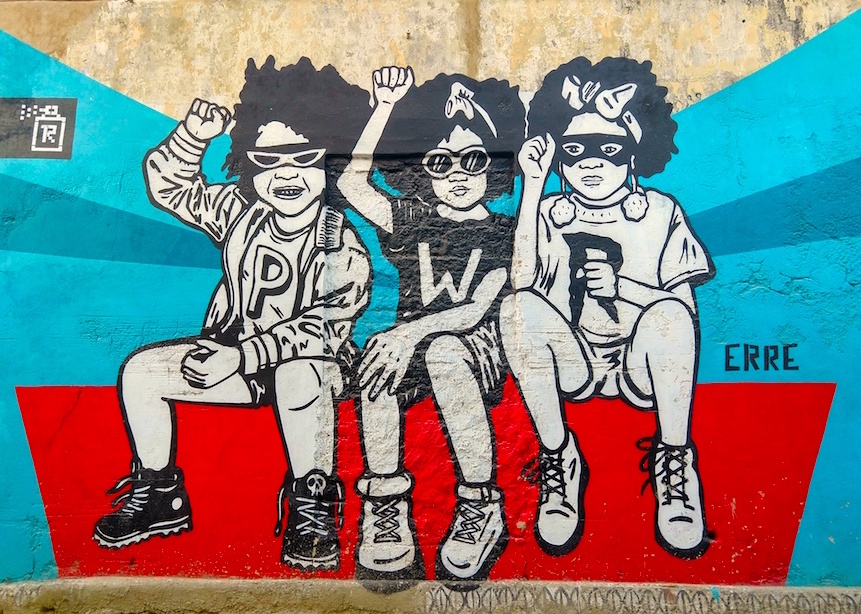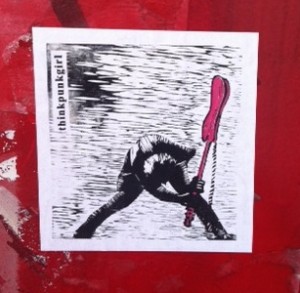also, re salt marsh monitoring – the photopaper method is a keeper; GSI goes 255 – 0; working range for the method is ∴ 0 – 50 mg/L sulfide. This sulfide concentration range covers toxicity thresholds for Spartina sp. root development, growth and propagation. Summer 2024 field test demo looks like this for field color scan (L) and grayscale conversion (R). 2025 field deployments starting soon to build a multi-season dataset.
Starting on this MTMRN collab for 2025: Love Your Marsh! Public Event Series
*
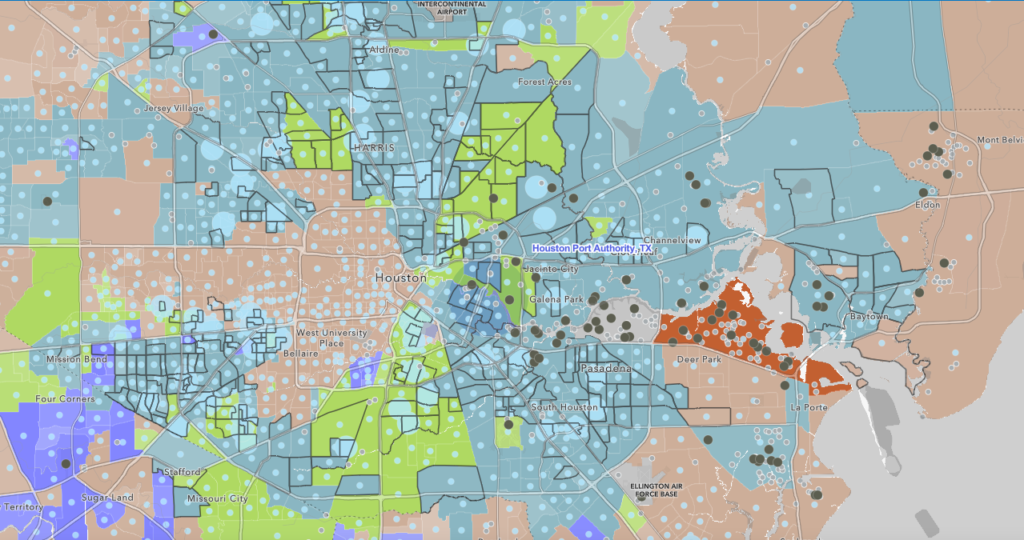 Multi-factor risk mapping with ArcGIS: port cities, air quality and social vulnerability risk || Race or Ethnicity (polygon) × Elevated % Poverty (40%; centroid) × Elevated SVI score (90%; perimeter) + National Emissions Inventory (NEI) Facility Point Sources [2020] | (mapped data: USEPA; NOAA; CDC). City: Houston, TX
Multi-factor risk mapping with ArcGIS: port cities, air quality and social vulnerability risk || Race or Ethnicity (polygon) × Elevated % Poverty (40%; centroid) × Elevated SVI score (90%; perimeter) + National Emissions Inventory (NEI) Facility Point Sources [2020] | (mapped data: USEPA; NOAA; CDC). City: Houston, TX
*
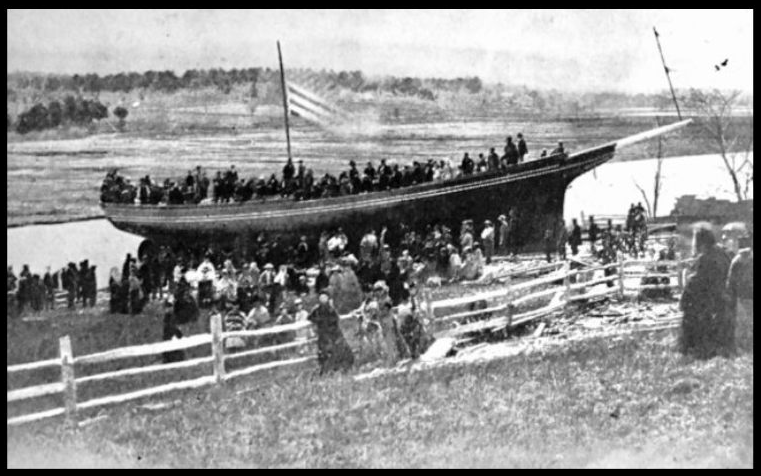 North River – Scituate, MA 1871. Chittenden Yard. Launch of the Helen Foster. Shipwright: Joseph Merritt – my grandfather’s grandfather (Dad’s father’s grandfather). Helen Foster – my great great grandmother. This was the final schooner built and launched on the North River in the waning days of cargo by sail in New England.
North River – Scituate, MA 1871. Chittenden Yard. Launch of the Helen Foster. Shipwright: Joseph Merritt – my grandfather’s grandfather (Dad’s father’s grandfather). Helen Foster – my great great grandmother. This was the final schooner built and launched on the North River in the waning days of cargo by sail in New England.
Mercury Pollution in Aquatic Ecosystems 11.24 (happy to share what I’ve learned)
[09.01.24_R1 – AEE-06-1553.R1_Merritt and Nagy_2024]. Failing better.
Best foundational STEM course I took as an undergrad: History and Philosophy of Science; best book I read in that course: The Structure of Scientific Revolutions. Starting Physical Geology (OS204) with Kuhn and with Wegener. Science & Tectonics
*
ffs. really? || With families in mind (as they write it), WalletHub compared more than 180 U.S. cities based on 45 key metrics to identify The Best & Worst Places to Raise a Family in 2024. The map they share looks like this (below; left). If we identify the 20+ U.S. cities that have been/can be/are characterized or experienced as still significantly racially segregated as the result of historical U.S. laws, policies and practices that have specifically limited opportunities, resources and financial access for Black Americans, that list looks like this (below; right). WalletHub writes: In order to determine which cities are most conducive to family life, [we compared cities] — across five key dimensions: 1) Family Fun, 2) Health & Safety, 3) Education & Child Care, 4) Affordability and 5) Socio-economics.
Care to hazard a guess at how many of the cities that WalletHub IDs as least conducive to family life are cities with a significant Census-defined Black population in which folks struggle to gain anything even remotely like economic traction? Two statistics: In the neighborhoods of white residents in large metropolitan areas, whiteness reaches 70+%; in white-majority neighborhoods outside of metropolitan areas, the white share of residents can exceed 85%. Do you hear the Institutional Ratchet clicking? When the NYTimes picks up a breathless little listicle like this and runs it without critique, do you see the utter casualness of their Black erasure? ICK.
*
This (McKown et al._2023) is the macro; rate-limiting for the micro is in the impact of soil saturation on the rate of vegetative regrowth; saturation = water-logging (= low-to-no dO2) = lack of soil physical stability to support plant root development; in the presence of SO42-, water-logging results in a shoaling of the redoxcline to a depth (v. shallow) that also results in inhibition of plant growth through the build up of sulfide within the biologically active zone. Nifty set of needs here in monitoring the rate of redoxcline re-deepening following the placement of runnels to drain mega-pools (fig. from Vinent et al._2020).
Big picture too: so go salt marshes, so go mangroves – loss of hydrologic connectivity leads to accumulation of sulfides with negative impacts on seed germination, root development and rhizome propagation for mangroves too (Pérez-Ceballos et al._2022). Starting some field testing of monitoring methods in salt marsh pools this summer. On the table at the moment: Photo paper; DGTs; and Hach kits. Got a pile of details to figure out, but the idea is solid: DGTs are ~$85/ea; Hach kit has a low/limited range; photo paper is untested(-ish) for this application (so, need to sort out viable concentration range, min/max for deployment duration, stability of results, etc.). Goal: low cost, repeatable and at least semi-quantitative. Pretty interesting.
Khachornsakkul et al._2023_Paper-based Analytical_Drinking Water Quality. Oh yes.
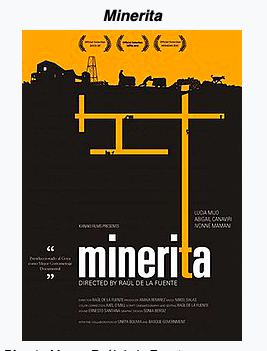 Dig, she wrote. & holler if you want a print copy – it’s on me. This focus is this & this. || Teaching & research – project on a slow pace at the moment – Public Health Needs & Response within Small-scale and Artisanal Mining Cooperatives in Bolivia. || Mine as Paradigm || Mud(flats) as Culture || Eco(as)Engine.
Dig, she wrote. & holler if you want a print copy – it’s on me. This focus is this & this. || Teaching & research – project on a slow pace at the moment – Public Health Needs & Response within Small-scale and Artisanal Mining Cooperatives in Bolivia. || Mine as Paradigm || Mud(flats) as Culture || Eco(as)Engine.
*
If contaminant biomagnification can be shown to be minimal, the question of how to remediate saltmarshes and tidal wetlands is technically straightforward, although societally challenging to advocate for and advance. The challenge is in the public perception that the concerns with leaving contaminants in place outweigh the benefits of leaving the marsh and tidal wetland in place. The parallel and increasingly urgent need to maintain tidal marsh platform height as the rate of sea level rise ticks upward has added a layer of support to the in situ contaminant management framework. Adame et al._2024 have just added another. The ancillary benefit for biomagnification management? Progressively deeper burial of the most significantly elevated chemical concentrations and a decrease in the integrated average exposure concentration across the biologic mixed depth. #AllTidalWetlands indeed. Pretty damn sweet.
(Salt and The Fleet…where did this start? 1988. That summer: Bergen, Norway; Helsinki, Finland; Leningrad, U.S.S.R. [as it still was then]. Going back to Yerp by ship? Yes, please. Sign me up.)
Tania Kovats || Thames || Evaporation 28 & 29, 31 || Oceans || Wet Land || TIDE
In the aftermath of natural disasters (a category of calamities that currently excludes extreme heat and so also excludes the possibility of FEMA $$ in the after-event period), the ratchet that is U.S. society starts clicking: Wealthy communities receive new buildings, new breakwaters, new infrastructure to maintain water, sanitation, energy and transportation service & supply and, in return, those communities continue to grow safer in the face of increasing climate instability. Low income, and particularly, low income × Black communities receive…what? Short-term services and programs, yes, but, also active structural disinvestment. And, in return? These communities continue to grow more structurally vulnerable in the face of that same increasing instability. Two maps; three cities. Seeing whiteness as blankness is a choice. This process isn’t passive either. And, yes – that White-borne and racially-coded theory that started the panic that, in lowering the minimum age for prosecution as an adult, forced thousands of Black children into the punishment regime of adult prisons. Lean all the way into that dissonance. Two maps indeed.
March et al._2021_Danger or Dislike Root cause chaos and the danger of id projection. Right here. The Dual Implicit Process Model distinguishes the implicit processing of physical threat (i.e., “Can it hurt or kill me?”) from valence (i.e., “Do I dislike/like it?”). The authors write: “Black-threat association is stronger than a Black-negative association” meaning: without specifically addressing the association of threat that White people hold with respect to Black people (and, in this specific study, with images of Black men in particular), anti-Black bias interventions focusing on individualized like/dislike approaches will never be effective. As White folks, this problem of threat association and projection is entirely of our own creation and the ramifications of it are deeply dangerous to people who we racialize as Black. This is rootstock.
Jeyakumar et al._2021_Foldscope || this is just cool as…well, you know what as. Foldscope paper instruments. Absolutely beautiful NextGenSTEM.
What I saw, she wrote: The cartographers busy drawing and redrawing lines through violence. | Christina Sharpe; Ordinary Notes (2023) || Urban Segregation & Public Services Provision | Regardless of what the Supreme Court majority says, we do not live in a post-racial, color-blind society. We need to continue having this absolutely necessary conversation between the ABET accreditation requirements and the teaching and practice of STEM fields. (07.15.23). Upcoming publication release: Dividing Lines (2025).
I ❤ Coastal Geomopho || + a teaching demo re that subdux geochem ↑ P ↓ T space]
Water Studio + GIS Health Geographies. This is how this works. Pilot for Infrastructure, Spatialization and Society (GIS-based; no prior GIS experience needed) and Power, Equity and Society (w/o GIS). Water, sanitation, transportation and energy. Why is this content & context so critical? Within the content & context of energy systems and infrastructure, Northeastern University Professor of Law, Public Policy and Urban Affairs, Shalanda H. Baker writes it like this: “’Resilience‘ calls for an energy system that is able to bounce back from climate change events.” and so we must ask: “What are we bouncing back into?” Designing for sustainability and resilience in built systems does not equate to guaranteeing equity and justice for those most impacted when those systems inevitably fail. Remember this: resilience leans toward stasis. This orientation is super important to understand if & when the framework you may actually want to be reaching for is transformation.
Older housing stock × linguistic isolation × concentrated poverty + sea level rise (SLR) = one version of the future present that requires transformation. Here is one way that community risk mapping can be approached (made with ArcGIS; data from ACS and NOAA). This (and also there below) is the city of Miami, FL; this is spatialization by race × class of the impacts of sea level rise and climate instability on coastal communities and this is urban water infrastructure and the urgent need for how. Talking about this particular 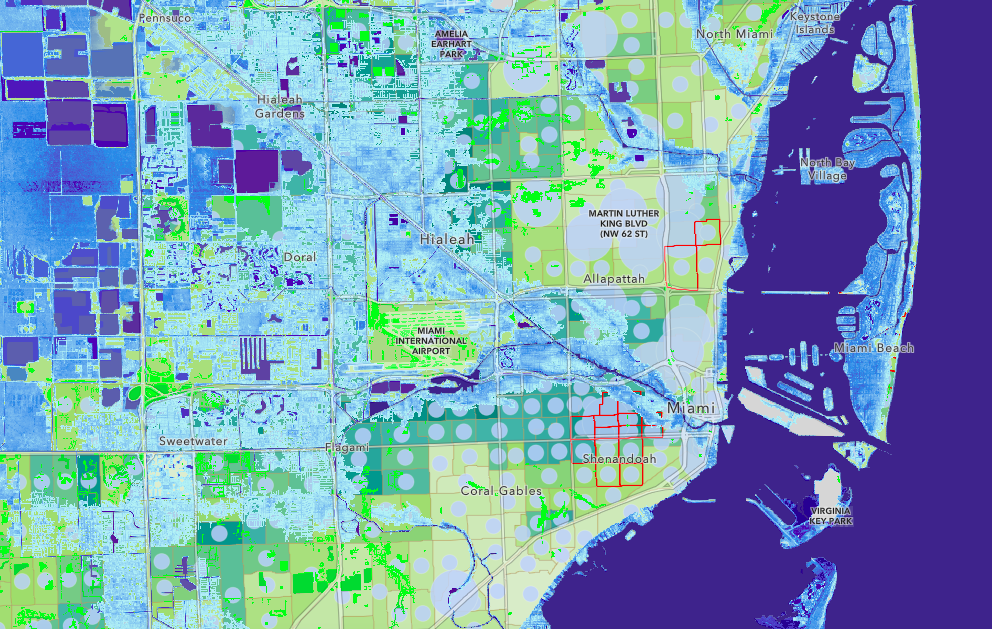 water infrastructure problem in Coastal Geology @ MMA from a local vantage: Infrastructure and the Littoral Zone (04.21.23).
water infrastructure problem in Coastal Geology @ MMA from a local vantage: Infrastructure and the Littoral Zone (04.21.23).
DR said it best: the great circle route. Fall term, first year – Environmental Geology – that seminar that was outside the standard Geology course sequence and a whole new approach to a field I’d grown up in the middle of. Click. And work and think and work and think and look around and at some point this: The purpose of public health is not to study people; it is to study the circumstances in which people live so as to understand how to help limit exposures and challenges that are health-negative. The ultimate goal? to change the circumstances that make health hard to access. Click. And engineering? – and specifically, civil and environmental engineering? – is a toolkit that can be useful for changing those circumstances. Click. As white STEM professionals, if we are not focused on the impact of our technical decisions, it is 100% for certain that those impacts will be specifically and acutely health-negative for some members of society. It is also 100% for certain that we don’t collectively and often, actually, see who those members of society are. So, what are we working on? Finding community. And leverage. Click.
Absolutely genius DIY. Dr. Lourdes Vera, SUNY Buffalo. Shoutin’ her greatness out loud.
Why does ABET need to explicitly address the current absence of – and absolute need for – racial and environmental justice content within accredited STEM curricula? Consider this: as of the most recent data available, > 85% of professionals in science and engineering in the U.S. are White or Asian. In Black, Brown, Bruised: How Racialized STEM Education Stifles Innovation (2020), E.O. McGee writes that one specific root of institutional racism in STEM is in the framing of STEM in Historically White Institutions (HWI) as comprising a set of fields in which the production and the dissemination of knowledge are “neutral and unconnected to power relations“. Want a paraphrase?: Step 1: Create a hierarchy in which well!hey!howboutthat?? there you sit at the top of the pile. Step 2: Redefine z = 0 at your current leveled gaze. Step 3: You there, trying to climb my pile: what’s with all that disturbing the peace kind of commotion?? Need an example? Here’s one:
How this issue is framed within a race- and class-based U.S. social and economic hierarchy that prioritizes the way things are instead of the way things should be:
“We’re sick of having to put our lives on hold in order to fight back against a dangerous polluter because the state and city refuse to do their jobs,” [Southeast Environmental Task Force] Executive Director Olga Bautista said in a press release in 2020. “[W]e need the city to step up and prevent this threat from coming to a vulnerable community.”
How this issue is framed within a race- and class-based U.S. social and economic hierarchy that prioritizes the way things are instead of the way things should be:
In 2020, the City of Chicago released an Air Quality and Health Report that stated, “In Chicago, with its history of segregation and disinvestment in Black and Latinx communities, the differences between neighborhoods can be stark. Some communities have rates of poverty, cardiovascular disease, and chronic obstructive pulmonary disease (COPD) that are ten times greater than others.”
How this issue is framed within a race- and class-based U.S. social and economic hierarchy that prioritizes the way things are instead of the way things should be:
A spokesperson for [RMG], Randall Samborn, said at the time, “What should have been an apolitical permitting process was hijacked by a small but vocal opposition that [said] they would unconditionally oppose this facility, facts and science be damned.”
How this issue looks on a map. Just keep cranking.
*
We don’t need the data to know it, but it appears we do need the data to show it. Talking at work one day a little while back about race, privilege, and background and somebody said it: well, whatabout Michelle Obama? Well, okay, what about her? 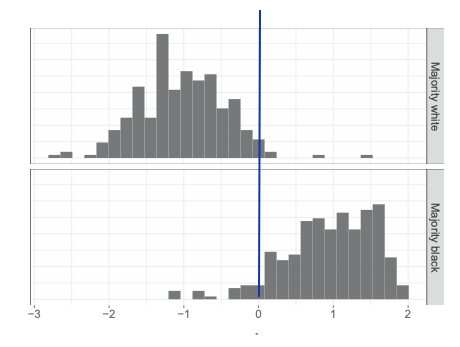 Starting with the answer here first: In Chicago, harsh environments are racially segregated, with little overlap in exposure rates for blacks and whites: virtually all majority black Census tracts are more exposed to hazards than any majority white tracts. This large difference in exposure rates plausibly accounts for a substantial portion of racial disparities in intergenerational inequality. (Manduca and Sampson; 2019) || Here are where the results land by census tract. Data are given as two graphs (although with this distribution could easily be presented as one): results for majority black (n = 292) census tracts (lower graph) and results for majority white (n = 263) census tracts (upper graph). The authors of this study asked this question: does the neighborhood environment you grew up in say something important about how much effort it takes to haul yourself up, out, and free of the gravitational well of U.S. history that makes it very hard for Black kids to unfurl their dreams and fly? The gravitational well the authors identify is described like this: start with a field leveled up at zero (blue line in the graph); add points for frequent incidence of neighborhood violence, neighborhood folks’ time sacrificed to prison by policies and practices that tilt life toward an accumulating weight of damage, and neighborhood environmental chemical exposures, most specifically lead (Pb) from residual contamination of soil (source: leaded gasoline) and homes (source: leaded housepaint) and increasingly from drinking water (source: lead in municipal plumbing); subtract points for social scaffolding and supports that nurture kids’ chances during the transition to young adulthood: is your neighborhood cohesive? are folks minding your business? do your parents have time (meaning, money) to attend to your physical, mental, emotional and spiritual growth? Now graph the results out by neighborhood – in this case, for the city (Chicago) for which these researchers could access these data to ask this question and the results look like this graph. Think of the x-axis as a challenge score: the more positive the number the steeper the climb out of childhood and the stronger the pull of social (historical) gravity that keeps you right exactly where you started; as the score gets smaller and the numbers get closer to zero from the right the shallower grows that well. When the numbers slide negative in the context of these criteria, you – as a kid – live in a neighborhood that offers more supports than challenges. When the numbers slide really negative, you can just about watch those kids float free. This figure and that former colleague are extraordinary – both, in different ways, for their utter clarity. And, Michelle Obama? She’s another kind of extraordinary entirely. But, enough said. We don’t need any kind of data to know that at all.
Starting with the answer here first: In Chicago, harsh environments are racially segregated, with little overlap in exposure rates for blacks and whites: virtually all majority black Census tracts are more exposed to hazards than any majority white tracts. This large difference in exposure rates plausibly accounts for a substantial portion of racial disparities in intergenerational inequality. (Manduca and Sampson; 2019) || Here are where the results land by census tract. Data are given as two graphs (although with this distribution could easily be presented as one): results for majority black (n = 292) census tracts (lower graph) and results for majority white (n = 263) census tracts (upper graph). The authors of this study asked this question: does the neighborhood environment you grew up in say something important about how much effort it takes to haul yourself up, out, and free of the gravitational well of U.S. history that makes it very hard for Black kids to unfurl their dreams and fly? The gravitational well the authors identify is described like this: start with a field leveled up at zero (blue line in the graph); add points for frequent incidence of neighborhood violence, neighborhood folks’ time sacrificed to prison by policies and practices that tilt life toward an accumulating weight of damage, and neighborhood environmental chemical exposures, most specifically lead (Pb) from residual contamination of soil (source: leaded gasoline) and homes (source: leaded housepaint) and increasingly from drinking water (source: lead in municipal plumbing); subtract points for social scaffolding and supports that nurture kids’ chances during the transition to young adulthood: is your neighborhood cohesive? are folks minding your business? do your parents have time (meaning, money) to attend to your physical, mental, emotional and spiritual growth? Now graph the results out by neighborhood – in this case, for the city (Chicago) for which these researchers could access these data to ask this question and the results look like this graph. Think of the x-axis as a challenge score: the more positive the number the steeper the climb out of childhood and the stronger the pull of social (historical) gravity that keeps you right exactly where you started; as the score gets smaller and the numbers get closer to zero from the right the shallower grows that well. When the numbers slide negative in the context of these criteria, you – as a kid – live in a neighborhood that offers more supports than challenges. When the numbers slide really negative, you can just about watch those kids float free. This figure and that former colleague are extraordinary – both, in different ways, for their utter clarity. And, Michelle Obama? She’s another kind of extraordinary entirely. But, enough said. We don’t need any kind of data to know that at all.
Stories of place. Something like this. There are digitized HOLC redline maps now for 200 U.S. cities. This is how I’m thinking about the semester project component for a new undergraduate general (GEE) or public health engineering course in the works. The requirements to directly address inequality and inequity in discussion of professional (and personal) ethics is what’s finally coming in the ABET certification framework for engineering, in specific, and STEM, more broadly. What we need is to ensure that the talk that’s going to be walked is actually going to be walked within the curriculum and not just built into the structures that surround it. Engineering is a very White profession; we need to learn and teach (and learn more and teach more and also unlearn many things in there, as well, and unteach them too) how to foreground the often easily invisible disparities in health that result from how decisions regarding infrastructure shape access (or not).
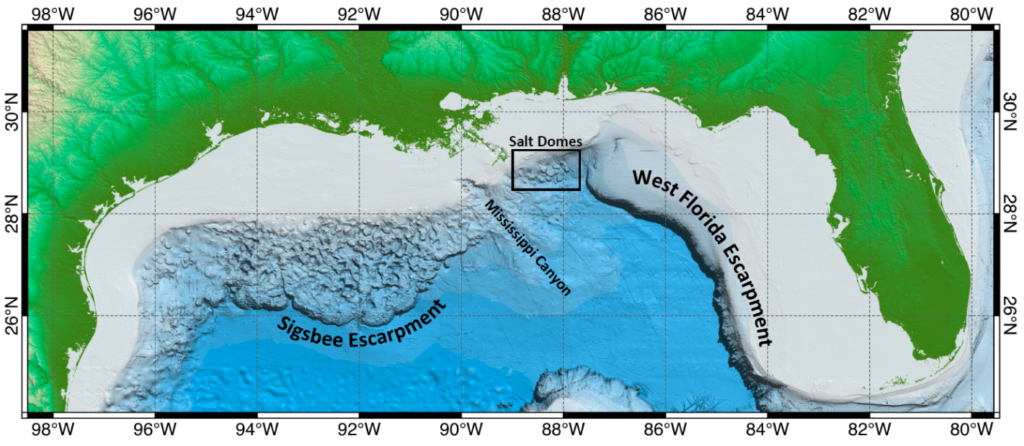 Yeah. I know. This is absolutely THE nerdiest thing that makes my nerd heart sing. Set your lava lamp speed dial on geologic time and your sight range on the margin of entire ocean basins. Picture the Gulf of Mexico. Then just inhale. and exhale. and let this motion play out along the continental shelf as slooooooow as you can imagine any motion playing out anywhere. This is salt tectonics. It is pretty much as cool as anything gets.
Yeah. I know. This is absolutely THE nerdiest thing that makes my nerd heart sing. Set your lava lamp speed dial on geologic time and your sight range on the margin of entire ocean basins. Picture the Gulf of Mexico. Then just inhale. and exhale. and let this motion play out along the continental shelf as slooooooow as you can imagine any motion playing out anywhere. This is salt tectonics. It is pretty much as cool as anything gets.
*
 Boat (2009) – Nguyen Phuong Linh (b. 1985; Hanoi, Vietnam) Inspired by the salt villages of northern Vietnam and the shape of carried memory, this installation is intended to dematerialize: as the salt dries and the water evaporates, the work begins to crumble and dissolve while on view. Nguyen writes: “I like the idea of the boat because it has so many metaphors: an eye, a fish, a leaf, a piece of rice, a grave, a boat itself going to be dissolved in the sea. I didn’t think about cultural custom or censorship in this work but more about creating a minimal landscape in space…It’s very exciting to me that the salt is melting during the exhibition; this makes the work continuous and perhaps never truly finished. The landscape is slowly transforming all the time.”
Boat (2009) – Nguyen Phuong Linh (b. 1985; Hanoi, Vietnam) Inspired by the salt villages of northern Vietnam and the shape of carried memory, this installation is intended to dematerialize: as the salt dries and the water evaporates, the work begins to crumble and dissolve while on view. Nguyen writes: “I like the idea of the boat because it has so many metaphors: an eye, a fish, a leaf, a piece of rice, a grave, a boat itself going to be dissolved in the sea. I didn’t think about cultural custom or censorship in this work but more about creating a minimal landscape in space…It’s very exciting to me that the salt is melting during the exhibition; this makes the work continuous and perhaps never truly finished. The landscape is slowly transforming all the time.”
*
Lowndes County, AL and the Road to Black Power | It is important to know the history – of people, of places, of movements – and it is important to know who drives change and who they drive it for. It is also important to not mistake the past for the back then in the where inequity and inequality and injustice somehow all got resolved. Catherine Coleman Flowers grew up in and works now in Lowndes County. Two numbers: 75% and 85% – the percentage of Lowndes County residents who are Black and the percentage of Lowndes County households that have failing or inadequate wastewater systems. A third number: 50% – the approximate percentage of that 85% for which ‘failing or inadequate’ means raw sewage ponding in your yard. Do you know you can be fined in AL for failure to maintain your septic system? Do you know you can be jailed in AL for failure to pay that fine? Do you know Lowndes County is one of the poorest counties in the nation and that fines can stack up at $500 a pop for sewage violations if you can’t conjure $20,000 to replace your septic system? Do you see that you can be arrested for being too poor to maintain an infrastructure so poorly designed for the clay soils where you live that there’s sometimes no other strategy than to straight-pipe the waste out into your yard so it doesn’t back up in your home? With the geology in AL being what it is, do you see that $20,000 – if it were to somehow magically appear – would buy you a short-term respite from this sanitation nightmare and the law, but it wouldn’t fix the bigger issue that is this: as long as the problem – and therefore, in turn, the framework that allows them to punish you when you can’t provide the solution they demand – can be placed on you instead of being shouldered by those who should be installing better municipal-level waste management infrastructure so that nobody’s children have to play in sh*t, this country will continue to operate in ways that penalize Blackness and poverty and extort the same. This is how this works. As a public health engineering type, what and how we do about this for folks in Lowndes County – as well as elsewhere where folks are dealing with other versions of this same crisis – goes round and round and round in my head.
Jackson, MS. Polluted drinking water is violence. | Read: Mississippi Accused of Intolerable Racial Discrimination | and Read: EPA Launches Civil Rights Investigation into Mississippi Water Crisis | and Read: The Jackson Water Crisis Years in the Making | and Read: DOJ Takes Legal Action Over Mississippi Capital’s Drinking Water Crisis
Working on the Penobscot – I started working on the Penobscot River in 2003 for my dissertation. I wanted to work on this project because it is local – to here and to me; my family history with this river goes back to my father’s father – he was an elevator repairman for Otis Elevator and serviced the mills in Millinocket. The P’nobby, he called the river. Back two generations. It’s such a short timeline in the long view of who belongs to and with and where and who looks after this river, but it’s been my small part (10.12.22).
Undesign the Redline – next up project – details TBD – 2023
Palm Springs, CA _ Section 14 | 1965
Jackson, MS – 150,000+ people in a city in which > 80% of the population is Black. Read: ARD; and read: Mississippi Free Press and read: Mississippi Today and don’t stop reading: The Root. 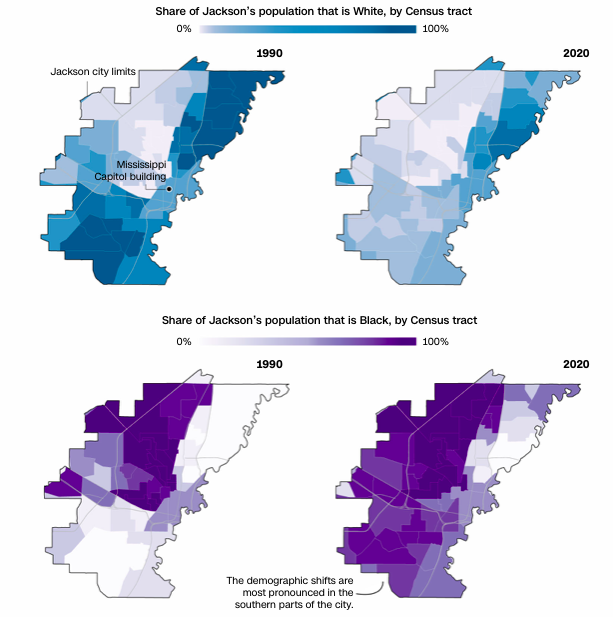 The population of Jackson, MS has declined by ~50,000 people over the past 30 years. This (image to the left) is how the racial demographics of the city have shifted during that decline. Who up and left? The white folks. This is what White Flight looks like. This is Racial Capitalism working. Meaning: what is happening in Jackson, MS isn’t an aberration somehow occurring within a system that otherwise consistently provides equitably distributed services regardless of race. This is what we have to learn to wrap our minds around: this isn’t a working system that has broken in one specific location (in this case, Jackson, MS); this is an utterly broken system working as it has been designed to work for those for whom it has been designed to work for. W. Craig Fugate, FEMA administrator under President Obama, puts it like this: “Our [infrastructure] investments need to be looked at through the lens of where are the most vulnerable populations, not necessarily where are the most valuable properties.” This is what isn’t happening.
The population of Jackson, MS has declined by ~50,000 people over the past 30 years. This (image to the left) is how the racial demographics of the city have shifted during that decline. Who up and left? The white folks. This is what White Flight looks like. This is Racial Capitalism working. Meaning: what is happening in Jackson, MS isn’t an aberration somehow occurring within a system that otherwise consistently provides equitably distributed services regardless of race. This is what we have to learn to wrap our minds around: this isn’t a working system that has broken in one specific location (in this case, Jackson, MS); this is an utterly broken system working as it has been designed to work for those for whom it has been designed to work for. W. Craig Fugate, FEMA administrator under President Obama, puts it like this: “Our [infrastructure] investments need to be looked at through the lens of where are the most vulnerable populations, not necessarily where are the most valuable properties.” This is what isn’t happening.
Within continua there are categorical breaks: hypersegregation and concentrated poverty. Here is how the intersection of race × class maps for the specific variable of drinking water quality in the U.S: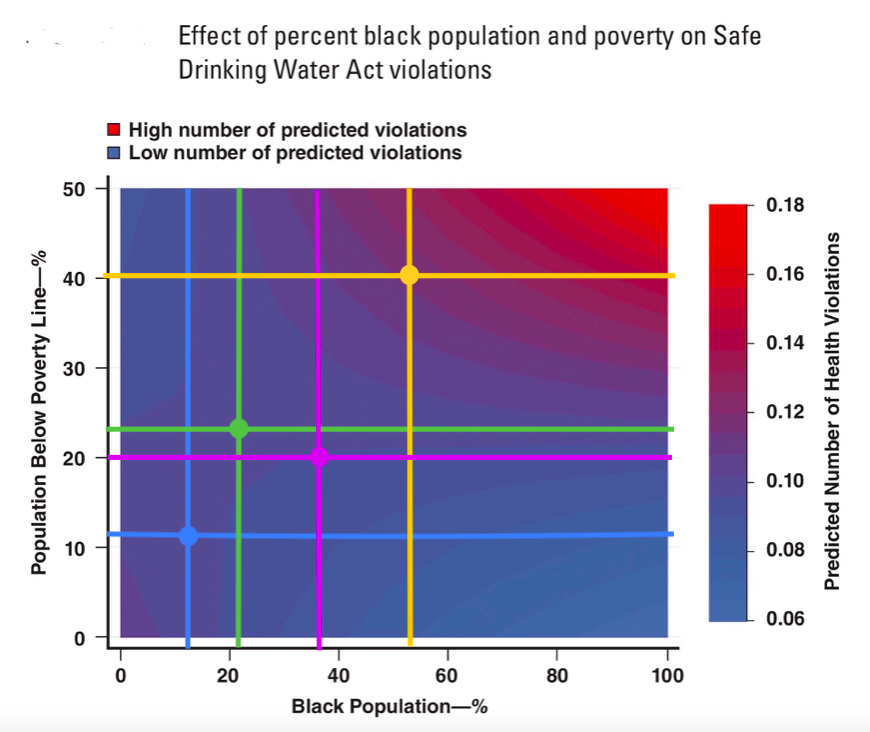
- blue × blue = U.S. demographic average for race [Black] × poverty [% of population living below the poverty line];
- green × green = the highest intersectional proportion of urban Black community population × community poverty possible without incurring a water quality penalty as defined by violations of the Safe Drinking Water Act;
- purple × purple = average urban Black community proportion for the 50 U.S. metropolitan areas with population > 1 million people × percent urban Black poverty;
- orange × orange = urban Black community proportion for the 12/50 metropolitan areas defined or described or experienced as hypersegregated by Blackness × the categorical definition of concentrated poverty.
In the United States, there are approximately 36,000,000 Black people living in urban areas, of whom approximately 11,000,000 (~31%) live in areas categorized as hypersegregated. This is the Ghetto that White Supremacy builds in this country. Concentrated Blackness doesn’t have to result in concentrated poverty (and, of course, doesn’t always), but in the U.S. it frequently does. Why don’t you (we) see it? Because although metropolitan areas are overall 55% white, in the neighborhoods of white residents in those large metropolitan areas, whiteness exceeds 70%. And as the area gets less urban the demographics get even whiter: the white share of the population in white-resident neighborhoods outside of metropolitan areas reaches 85%. Situating this reality at the intersection of race × class (as above, for drinking water quality): if you’re white, your reality is likely somewhere between ‘to the left of the vertical purple line’ (if you live in a metropolitan area) and ‘to the left of the vertical blue line’ (if you don’t). Say these scenarios average to the vertical green line; one way to say what this scenario describes is this: if you’re white and living the vertical green line reality, it doesn’t matter how poor you are – your poverty doesn’t impact the quality of the drinking water you can expect. This is a categorical break. This is why you (we) don’t see it. This is why engineering – as well as other white-dominated disciplines that frame & define themselves as standards-bound to serve ‘the public good’ – needs to start walking their talk and teaching it. You can’t fix what you don’t see.
In The Failures of Integration (2004), Law Professor Sheryll Cashin writes that there are 5 factors that create and shape the full range of possible socio-economic experience in the U.S. Expanding a bit in the details, these 5 factors are: the localness of the power that controls municipal zoning; the early- to mid-20th century policy of Federal mortgage backing and the resultant grading A-through-D of loan potential based on neighborhood-scale assessment of insurability risk; the mid- to late-20th century arc of Urban Renewal, including the building of the interstate highway system; the re-framing of public housing from (initially) a socially-supported route toward home ownership to (by the 1950s) a strategy for societal control of the poor; and, underlying it all, the private beliefs about race made manifest and given traction into policy by white realtors and civil servants who project(ed) their personal bias into their professional decisions.
Waves that overlap and build constructively, that is waves that – in the parlance of engineers – ‘stack’, create amplification. The idea of amplification – the way a wave grows taller through the vertical reinforcement of smaller waves – when applied to socio-economics and race, describes cultural stratification.
If you are wealthy, the overlap and reinforcing of these 5 factors conspire in your favor and create racially homogeneous gated communities with private policing, exceptional and responsive public schooling, and very little need to interact uncomfortably with anyone who doesn’t look like you. The odds are very very high that if this is your reality, you are very very likely to be white.
If you are not white, the overlap and reinforcing of these 5 factors has very likely historically zoned you out of the residential-only municipal areas in which air quality was (and is) actually something of quality, and into areas in which home ownership may have never been possible and in which too many people were forced to live in too small an area made smaller still and walled round by eminent domain and infrastructure placement or by the construction of wildly over-sized high-rise apartment blocs that ultimately spiraled down and imploded on the folks who tried to | had to live in them. What didn’t implode, and should have, was and is the opprobrium of those who convince(d) themselves that if they only shout the lie of bootstrap-physics loud enough and long enough, their personal distaste for people who are poor or Black or poor and Black will smooth itself into value-neutral and objective societal statements regarding our each, individual, equal capacity for gated community success and greatness.
If you are not just not white, but are specifically Black and living these 5 factors overlapping, edit every ‘very likely’ and ‘may never’ from the paragraph above and read that paragraph again in the absolute. If you are Black, these 5 factors actively work to amplify against you. The result is a hypersegregation also, but it is the upside down of the gated community world.
If you are white, this dynamic of amplification – of factors invisibly stacking in your social favor – is what creates, in the words of Sheryll Cashin, the (invisible) secession of the successful. It also – in the upside down, in what it does to spatially constrain and contain you if you are Black and poor – generates what we have actively created in this country as The Ghetto. This statement doesn’t mean that all ghetto residents are Black, nor that all Black people live in or are from the ghetto. It does mean though that the odds are very very high that if all 5 factors stack and reinforce against you, that you are very very likely to be Black.
Mobile in Black and White – back to AL – got a trip coming up here in the by & by.
Switzer Foundation – Integrating Social Justice into STEM Education and Practice – Presentation components: Part I | Part II | Part III || 07.27.22
learn | teach | learn – this is full on learn: Roberto_2016 – slow and steady
Structural Urbanism – this is a bias in how we think about health service provision. In brief, if one’s focus on community health is urban-oriented, it makes sense to think about centralizing services (clinics, food pantries, markets) so that people come to these services. With this framework, it will always be inefficient to ‘provide health’ in rural areas because population densities are too low for cost effectiveness. So, how do we think about health beyond a framework of cost effective service provision? Infrastructure is ultimately about linkages – physical as well as social. How does infrastructure need to look to support health – including food security – in rural areas?
Faber_2020 | The actions weren’t accidents; the consequences aren’t either. It is the intentionality of the geographic racialization that has always driven (read: been the goal of) infrastructural decision-making in the U.S. that we have to find ways to see and to teach. On an individual level, Power speaking in the passive is deflection. On a structural level – a societal level – Power speaking in the passive is how hierarchy works to maintain itself. Learn to see the intentionality of this behavior also. Watch for it in the language we use to talk about race.
The Why_v2:
Horst et al._2017 and Barthel et al._2013 | City Planning × Urban Agriculture × Food Justice || Think about this: fully 3/4+ of the context for health occurs outside hospital settings; this context is significantly and disparately shaped by the built environment. Here is a question: why is the planned re-engineering (right) of this Urban Renewal-era Arterial (left) viewed as an improvement @ where had formerly been a through street there? We need to develop models and policy for protecting agriculture – as well as other forms of urban provisioning and land tenure – in the face of infrastructural development pressure.
The Built Environment– (Fall 2021) – this is one aspect of what we need to start threading through the engineering curriculum. If you don’t learn how to see this then you won’t learn how to see the differential impacts of infrastructural decision-making on community health.
Merritt_Capstone_110721 – Municipal Drinking Water Quality and the Lead and Copper Rule (LCR): Conceptual Frameworks, Implementation Biases and Resultant Disparities in Community Health || The center of the why.
Dimensionally, health-impacting scenarios or contexts can be conceptualized as spatialized and structuralized. A spatialized context describes three dimensional space and maps the geographic extent of the now. Spatialized context describes how an individual moves through their worldscape and/or how a location – an intersection, a neighborhood, a city – exists within a larger organizational framework (in this case: a neighborhood, a city, a county or state). A spatialized worldscape is racialized if differences exist as a function of race in how an individual or a location (such as a neighborhood) experiences health, including safety. A structuralized context, in extension, expands upon this mapping to include time; it describes a four dimensional map of context. Structuralized worldscapes that look to history are racialized. A structuralized worldscape that looks to the future may be less so if spatialized disparities can be lessened in the now. This is the task.
Amy Stacey Curtis – oh hell yeah. repetition. rows. blocks. mills. floor lines. perspective. this woman gets that launch toward the horizon. this is momentum done beautifully.
(09.03.21) – ASCE_2021 – Public Health × Civil Engineering – how do we change the arc of the then to the when if we want to change who carries the weight?
Just released: Climate Change and Social Vulnerability in the United States (US EPA, 2021) Infrastructure is racialized. Do you see?
Race or Ethnicity × Socio-Economic Status (SES) (Switzer and Teodoro, 2017). How to interpret these figures: Pick a percentage of the population that is, for example, Hispanic – say, 20% – and make a sentence: If 20% of the population in an area is Hispanic (find 20% on the x-axis), the overall level of poverty in that area (walk your finger or your pen up a vertical line parallel to the y-axis at that 20%) doesn’t impact drinking water quality. Blue is 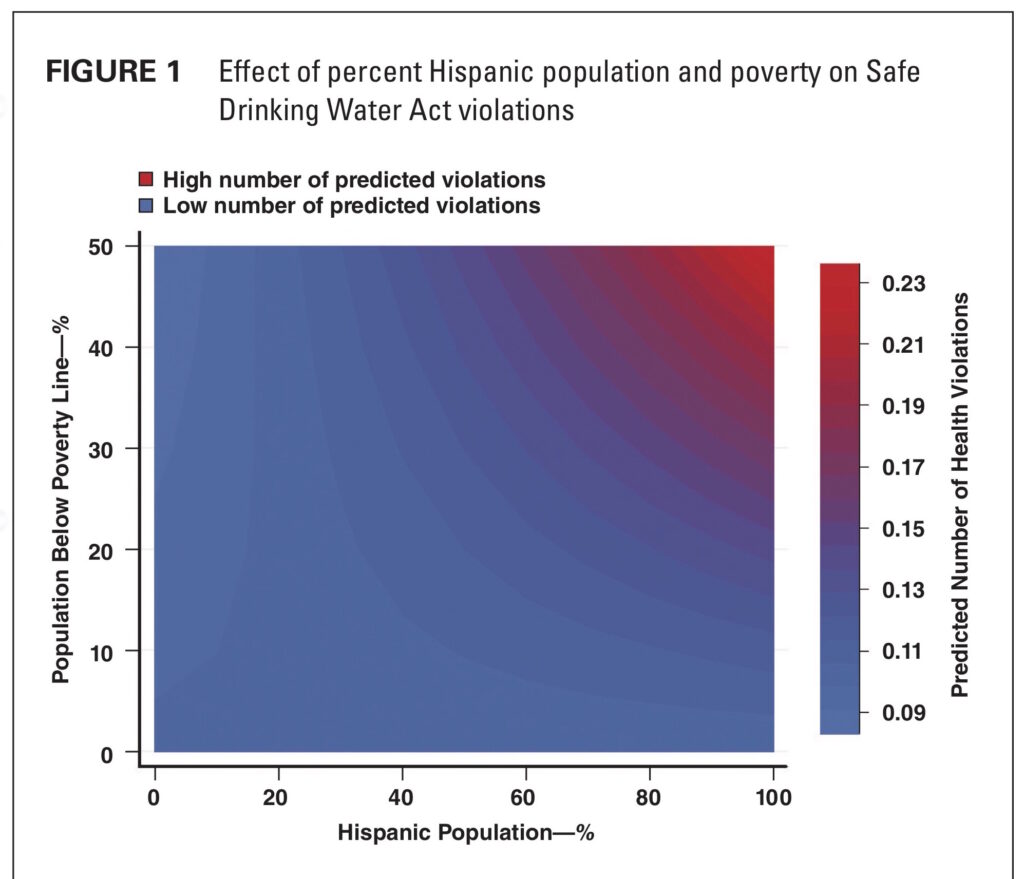 blue and the color on the graph doesn’t change walking up your 20% line. Flip your axes and do it again: If 20% of the population in an area lives below the poverty line (find 20% on the y-axis), the racial or ethnic composition of the area (walk your finger or your pen along a line now parallel to the horizontal) has no impact on drinking water quality. Again, blue is blue and the color on the graph doesn’t change walking along your 20% line. What if 40% of the population lives
blue and the color on the graph doesn’t change walking up your 20% line. Flip your axes and do it again: If 20% of the population in an area lives below the poverty line (find 20% on the y-axis), the racial or ethnic composition of the area (walk your finger or your pen along a line now parallel to the horizontal) has no impact on drinking water quality. Again, blue is blue and the color on the graph doesn’t change walking along your 20% line. What if 40% of the population lives 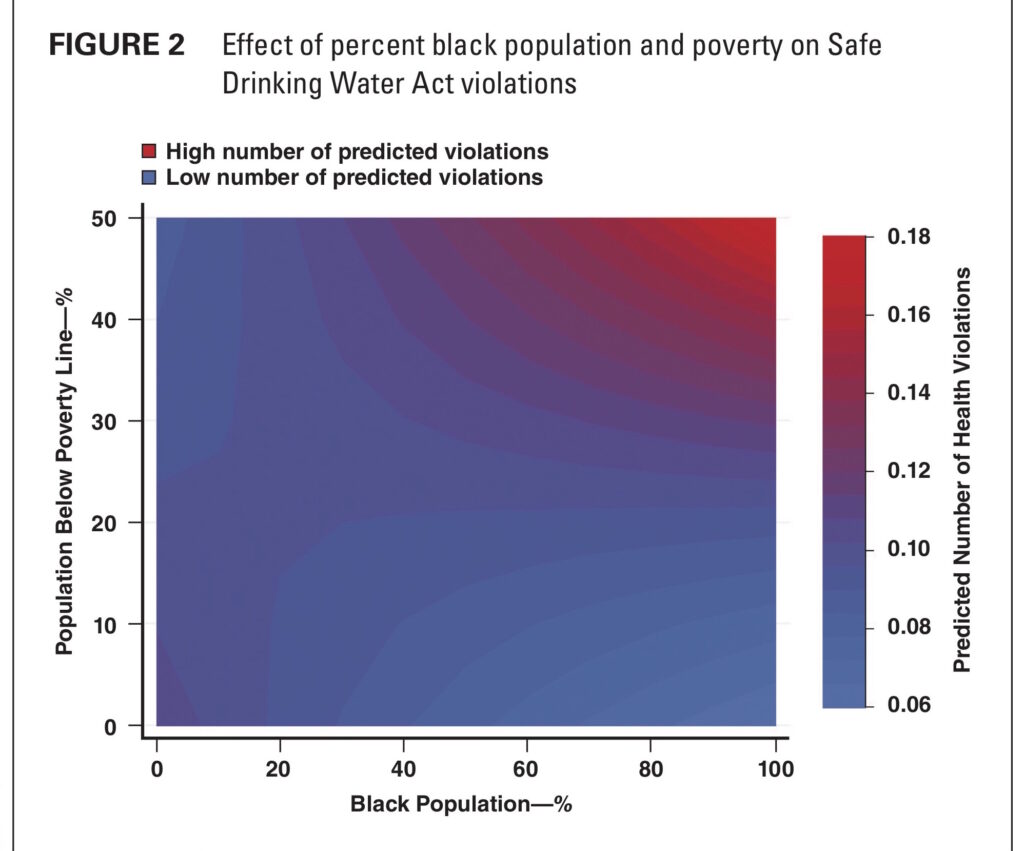 below the poverty line? Draw this horizontal line across the graphs and start walking your pen. If 40% of the population in an area served by a municipal water supply lives below the poverty line, then drinking water quality (modeled here as predicted health violations of the Safe Drinking Water Act [SDWA]) goes down (meaning the likelihood of health violations goes up) as the percentage of Hispanic or Black citizens increases. Walking along this horizontal line, watch how the blue becomes red. Are these graphs showing conscious bias on the part of water utility operators or does this study demonstrate that unconscious race × class bias exists in the maintenance of municipal drinking water quality? Both scenarios need attention; the solutionscapes to address them might maybe could be different though.
below the poverty line? Draw this horizontal line across the graphs and start walking your pen. If 40% of the population in an area served by a municipal water supply lives below the poverty line, then drinking water quality (modeled here as predicted health violations of the Safe Drinking Water Act [SDWA]) goes down (meaning the likelihood of health violations goes up) as the percentage of Hispanic or Black citizens increases. Walking along this horizontal line, watch how the blue becomes red. Are these graphs showing conscious bias on the part of water utility operators or does this study demonstrate that unconscious race × class bias exists in the maintenance of municipal drinking water quality? Both scenarios need attention; the solutionscapes to address them might maybe could be different though.
‘Perfect Storm’ or ‘Rogue Wave’ narratives ascribe a sense of the unusual to an event that – in retrospect – is held up as a point of distinction relative what’s come before or as a starting point with respect to the story that gets laid down in the aftermath. A challenge with applying these narratives to these events is that what may be the overlapping/reinforcing aspects or phenomena that result in amplification of action or impact may have as much or more to do with the media narrative as with the actual supposed uniqueness of the event. Here is an (utterly horrible in a way that I cannot understand you if your instinct is not to move toward overturning this system) example: the drinking water crisis in Flint, MI, in which thousands of the city’s citizens, and especially the city’s children, were exposed to elevated concentrations of lead (Pb) in drinking water following an economically-motivated change in the city’s drinking water supply. What happened in Flint, MI is what happens when a series of disparate factors – cultural, economic, political, technical, environmental, historical – overlap spatially; but these factors aren’t unique – they are happening everywhere. And while the news media moves on and the sense (distinct from the reality) of crisis passes or recedes from the public view, the issues themselves – including the impacts on public health from decisions made by the (wrong) few – don’t go away.
Crescive Troubles – arising from those health-impacting events and decisions to which the dominant cultural narrative doesn’t respond until a threshold has been exceeded – are what occur when our sense of response calibrates to the acute rather than the chronic. With respect to public health, crescive troubles are what occur when a system is calibrated toward a default that prioritizes operational efficiency. They are what occur when complexity is reduced to a binary: on/off; over/under; check the box on the list to confirm that there isn’t a problem today. They are the result of a mindset that defaults to making hierarchical decisions for the (personally constrained definition of the) common good. The threshold that ultimately triggers response can be as a significant change relative to a level previously and commonly considered as ‘background’ or the result of individuals and agencies skirting the edges of their mandates until they’re caught red-handed. These categories of thresholds or precipitating events are, of course, often tightly linked because they describe a similar worldview in decision-makers. So…Crescive Questions: How are the health-impacting events identified and against whom are the impacts directed? How has the cultural narrative been shaped in ways that permitted the preceding non-response? What is the threshold in question and why does its exceedence cause that Trouble to overflow?
Mindy Thompson Fullilove, MD – Fullilove_2001_RootShock – She calls it Root Shock; she calls it Serial Forced Displacement – this was and still is the reality of Urban Renewal. Approximately one million people have been displaced since the 1950s in the name of new highways, new civic centers, new arenas and new downtown Monuments to the Future. As Dr. Fullilove writes, this displacement of people and destruction of neighborhoods has taken place across more than 2500 Federally-funded Urban Renewal projects in ~1000 U.S. towns and cities. As she writes also: approximately 75% of the people who have been displaced are people of color and two-thirds of those who have been forced to move in the name of Progress are Black. Let this sink all the way in. If there’s any temptation to think that Forced Displacement is a thing of the past, find a way to watch The Area. There’s none of this reality that can get shelved as Over and Done With as History. This is weight that is carried around and forward. This is trauma.
Undergraduate Curriculum Framework – University of Maine College of Engineering (Summer 2021) – Organization | Conceptual Approach – Engineering for Change [E4C] – 120421 (updated) – this is how this can work; the idea is not to create a new minor or concentration silo within civil engineering; the idea is to thread Social Justice through an existing curriculum so that we learn/teach/learn how to foreground the often easily invisible disparities in Health that result from how decisions regarding infrastructure shape access. This here isn’t the end product; it’s one (of many) possible places of reinvention to start from. || Merritt_HPP698P – 080121 – Deliverable as of today. Solid traction on the process as of this week. Crank it up. || Next Up: Write it up: Urban Drinking Water Quality and the Lead and Copper Rule (LCR): Conceptual Frameworks, Implementation Biases and Resultant Disparities in Community Health
The Why_v1: If your job is to take care of infrastructure, it is important to see the long patterns and the biases inherent in its placement and maintenance. Seeing these patterns and biases is critical because Human Values and Social Context (meaning: ethics) fundamentally ground our profession in people and communities; if you don’t see the long patterns and the biases then you as an engineer – in service to your profession in engineering – will repeat the mistakes (feel the weight of this word; its use is intentional; feel the scaffolding around the social construct that allows this word to ‘work’ in this sentence) that have created, perpetuated and exacerbated social inequality and health inequity. Importantly, neither economic efficiency nor environmental sustainability as guiding criteria for the field will implicitly foreground social justice in decision-making; challenges to equity in the health of communities are only able to be addressed if they are seen; they will only be seen if they are looked at directly. Think of this as tracing the shape of something that you’ve allowed yourself to be encouraged not to see.
Think on-ramps, off-ramps, abutments and cloverleafs more than arches and throughways because whatever and however (and whoever) the structure is intended to span and inspire, it has to come to ground somewhere. So, whose neighborhoods get used for the anchors and foundations? And where does the community – where do the people – who get displaced go? And why was their neighborhood chosen as the foundation in the first place? Or put another way – in response to the well, it had to go somewhere – why here and not there? Seriously, keep asking this question: why here and not there? Why?
The goal is to turn the engineering curriculum inside out. Think about this – what we currently teach for domestic (state-side) engineering in the U.S. is a legacy of the Cold War: mostly single criterion decision-making optimized for scale (large) and efficiency (someone else will grapple with the damage later) with a fixedness of purpose (industrial – military brinksmanship) that encouraged only the advancement of those (almost entirely all white men) most able to utterly linearize their thinking. This set of capacities and objectives doesn’t describe the society we live in (and never did); if you are 20 years old and studying engineering now, the Cold War ended more than a decade before you were born and the idea of sacrificing everyone in society who doesn’t look or think like you for the sake of beating the U.S.S.R. (meaning: forcing into bankruptcy through technological escalation to the direct harm of everyone in that country who also wasn’t white or close to power) is just wha…??? We need a structure for engineering education now that isn’t built on a foundation of last century’s global geopolitical binary. So, what do we change? This set of goals and criteria – the Social & Physical Determinants of Health (Schulz and Northridge_2004_SDH): those conditions in the environments in which we are born, live, learn, work, play, worship, and age that determine our capacity for health in all forms – is a framing that more significantly describes the world we live in. This is the framework that engineering as a profession needs to be in service to creating, improving and sustaining. Put another way, access to Health – beyond those personal choices made affordable and available as a function of one’s race, class and socio-economic status – is an issue of social justice. Let engineering as a profession be in service to social justice. This is what needs changing. This is what the toolkit that is engineering is for. Turn the crank.
Put a third way, we don’t need the data to know it, but we do need the data to show it. Representation matters. Especially so for Black women in engineering. A 2015 study on demographics in engineering concluded that fewer than 1% of all U.S. engineering bachelor’s degrees are awarded to Black women. Without specific focus on the impacts of intersectionality in fields (like engineering) still most commonly characterized by the walking MPY (male, pale, Yale), the results of intersectionality are underrepresentation. The intersectionality that must be looked at squarely here is this: efforts and programs focused on boosting female enrollment in engineering tend to focus on white women; efforts focused on boosting Black enrollment in engineering tend to focus on Black men. When problems are structural – as they are in this situation – understanding the why requires a systems perspective. Consider this: perception of belonging matters. If you have it, it never occurs to you to doubt it. If you don’t have it – because of a potential myriad of reasons including no professors or advisors who look like you, few or no peers who may share the distinctions of your background, often an intense social transition into an environment in which you are handed the projection baggage of your exceptionalism for simply daring to show up and told that that weight is yours to carry, sorry/not sorry for the impact that that will have on your ability to move forward on your own personal and professional path – then there is nothing in the current process for developing engineering skills that supports your presence in the classroom. Maybe think about this: engineering doesn’t require extraordinary talent – that, uh…*magic chalk dust* quality that (MPY) culture can talk you out of believing that you possess – it mostly requires a willingness to turn the crank. If you want to turn that crank, what could representation look like if universities specifically turned up the volume on supporting the full range of students who want to do that work? What could representation look like if disparities like this one were leveled: with respect to professional salaries in engineering, white women make 78% of white men’s salaries, while Black women make 64%. 64%. Without specific focus on the impacts of intersectionality in fields still most significantly populated by the demographic with the greatest likelihood of being the least actively vested in social change, the results of intersectionality are absence. There is no reason not to re-invent the field’s foundation.
Dr. Monica Patrice Barra – Barra_2021 – The Lower Delta landscape and the rebalancing of power. What is restoration? How can you define the practice separately from who it’s for? So, who is it for? What value is information compared to autonomy?
FYS_Fall 2021 – UMass Amherst School of Public Health and Health Sciences (SPHHS) The Intersection, The Neighborhood and The City: Health Inequity, Infrastructure History and the Built Environment in Flint, MI
This seminar contextualizes the drinking water crisis that occurred in Flint, MI in 2014 through examination of the crisis’ basis and background. Contamination of the municipal drinking water supply in Flint, MI surfaced following an economic and political decision to switch the water source and has resulted in thousands of children (as well as adults) being exposed to elevated concentrations of lead (Pb) in city drinking water. We will examine the overlapping and often negatively reinforcing issues of infrastructure history, legal redlining and segregation, the regulatory framework for managing water quality and the social consequences of economic racism in political decision making, as well as, most fundamentally, the resultant inequities in the distribution of health impacts associated with lead (Pb) as well as other acute and chronic chemical stressors. We will approach these topics from the foundational vantage that technical training does not supersede lived experience and that socio-technical discomfort – either real or perceived – should be addressed within engineering.
Mapping Inequality – the intersection | the neighborhood | the city – to see inequity requires seeing the forces – socio-cutural, administrative, and legal – that create(d), sustain(ed) and (continue to) perpetuate(d) unequal access to resources. To see inequity requires seeing infrastructural history: waterways, bridges, canals, highways, pipelines, harbors, depots, rail yards – what got made where? When and how? On the scale of the intersection, what lies buried and what gets built? What grows? On the scale of the neighborhood, who gets walled in or blocked out? What got razed to the ground and rebuilt as something else in the name of (someone else’s) progress? On the scale of the city, what gets done now with what got left when (and where) what was made back then got closed up, filled in, shipped out or moved along? Who lives there and who doesn’t? Then and now. || For a time in the early ’90s I lived and worked out of New Bedford. This was where I really started thinking about infrastructure × history × social justice and how the pieces of the stories we tell ourselves fit (or don’t). This is where I still orient back to. Healthy Neighborhood Research Study_2016 | Groundwork Southcoast – Greater New Beige.
Foreground the invisible: this is problem zero. Ferguson_2012
Pipes | Joints | Lead (Pb) – Engineering is a tool box for specifically answering technical questions. The first step in answering technical questions is identifying what you need for tools to understand the question. The second step – once you’ve identified what you need to know but currently don’t – is building the tools themselves. The third step is turning the crank. This is the chart as currently provided and navigating by it can tell you whether you are over or under a specified threshold (example: 15 micrograms of lead (Pb) per liter of water in drinking water). In the decision-making space in which rules are made regarding municipal water quality, this is an important number to know and turning the crank until the gumball that represents our solution space drops from the gumball machine that is our federal regulatory framework has value. As an answer to the specific questions then of whether and how the lead (Pb) concentration in water responds sensitively to changes in ambient water chemistry, this approach will get you where you need to go. As an answer to the questions we need to be asking as engineers, though – including the why for the defining of regulatory limits distinct from safe exposure limits – this approach is nowhere near sufficient. This is problem one.
Julie Mehretu – [https://www.mariangoodman.com/artists/51-julie-mehretu/] – the psychogeography of space. Not just the space itself, but the embodied experience – 1,2,3D – over time – 4D – of being within it. Our conceptions of space and time are a quickening (or not) of the metronome (or not) of our environment. Add in that tick tick tick and your heart reels to escape the atomic clockwork; take away the marching hand and the bowl of your body fills to overflowing with (what to me, at least, has been my experience of) the islands. We are a mesh that moves within a mesh that wraps along and around a mesh, each distortion in the intersection of those grids, a storehouse of human energy. This is piezoelectricity made manifest on canvas – feel the potential within it hum away beneath you. Feel the choice – as someone offered up to me once – between implosion and internal explosion. Julie Mehretu’s work is explosion. Stadia I (2004); Black City (2007); Epigraph, Damascus (2016); Think of her work as maps; think of her work as riffs and scores; think of her work as the compass half-destroyed and gone haywire by the gravitational well of history. Think of her work as the palimpsest of human experience: the closer you look, the more you see; the more you see the deeper you feel the strain in what the map – laid down by whom and for whom – was ever intended to help you find. Or not. [https://www.wmagazine.com/julie-mehretu-interview-whitney-museum-retrospective-denniston-hill]
Yes! Transforming Wastewater Infrastructure in the United States – (Background as per link below) They write: While most cities and urban areas in the United States are served by centralized wastewater treatment systems with sewers for waste collection, nearly 25% of the U.S. population is served by on-site, decentralized systems such as septic tanks. Some areas unserved by centralized wastewater treatment facilities also lack access to septic tanks and other systems that treat wastewater on-site, due largely to household economic constraints (these systems cost between $3,000 to $30,000 per home) and unsuitable soil conditions. In areas including the Black Belt region of Central AL, wastewater challenges are acute, as raw sewage and pathogens are being discharged onto the ground and into local watersheds because there are no public sewers or functional septic systems. Effective, single-home, wastewater management systems (often septic tank systems) have a significant first cost and no institutional management (such as a public utility) which results in costly service and repairs, creating a significant financial burden for low-income, rural households. New technologies for monitoring, treatment, communication and control have the potential to address wastewater challenges at different spatial scales and population densities, and under differences in climate and both the availability and quality of water supply. This project aims to demonstrate the applicability and feasibility of this new, clustered, decentralized technology; to measure how such solutions can improve the health of surrounding residents; and to offer a path for other communities facing similar challenges to improve wastewater treatment and the environmental, economic and health conditions in their communities. https://worldprojects.columbia.edu/transforming-wastewater-infrastructure-united-states
Merritt_Viewpoint_0321– This is how I’ve been thinking about the intersection || Next up: Thesis and Practicum (2021) – Thesis: Racial Inequalities in Water and Sanitation Services Provision in the U.S.: Persistent Challenges and Legal Frameworks Applied in the post-Civil Rights Era; Practicum: The Curriculum || Turn the crank.
Just released (March 2021): Confronting Disproportionate Impacts and Systemic Racism in Environmental Policy [Lee_2021]
Science, Technology, Engineering, Environment and Math – https://www.hearstfdn.org/culture/funding-priorities | Right on. | Step One, he said – find somebody who believes in your vision who has money to support it.
Mbuya and Humphrey_2016 | Why do high rates of malnutrition persist for children even as economic advancement and food availability increase? One answer: because shortfalls in sanitation create endemic, persistent diarrheal diseases which physiologically short-circuit the ability of a child’s intestines to function in absorbing nutrients from food. This right here is the overlap in praxis that is one answer to that why. This field study also offers up a how. As the authors write: “We suggest that a package of baby-WASH interventions (sanitation and water improvement, handwashing with soap, ensuring a clean play and infant feeding environment and food hygiene) that interrupt specific pathways through which feco-oral transmission occurs in the first two years of a child’s life may be central to global stunting reduction efforts.” That this programmatic suggestion is simple doesn’t mean that it’s easy, but it does provide one route forward.
EPI_633 – Water, Sanitation and Hygiene (WASH); this is the crux. Specifically: how to support or encourage adoption of a sanitation-related behavior in the context OF local beliefs, versus via the need to CHANGE those beliefs? There really is no such thing as an intuitive “everybody should know this” connection between microbial contamination of drinking water and the role that hygienic behaviors – such as hand washing – can play in limiting the spread of resultant intestinal (enteric) diseases.
Catherine Coleman Flowers – Environmental Health Advocate and all around powerhouse – 2020 MacArthur Fellow – https://www.macfound.org/fellows/1060/ | Reading: 2018_ACRE Title VI complaint_LowndesCoAL [2018. The Alabama Center for Rural Enterprise (“ACRE”) submits this complaint against the Alabama Department of Public Health (ADPH) and the Lowndes County Health Department (LCHD) for violations of Title VI of the Civil Rights Act of 1964 and the U.S. Department of Health and Human Services (HHS) implementing regulations, 45 C.F.R. Part 80, on behalf of James Jackson, Yolanda Peoples, John Jackson, and other Lowndes County residents. ACRE requests that the U.S. Department of Health and Human Services (HHS) Office for Civil Rights (OCR) promptly and thoroughly investigate the allegations set forth in this complaint and take all actions necessary to ensure that the agencies comply fully with the law. ACRE requests that the OCR investigate and ensure that the policies, programs, and activities of the ADPH and LCHD comply with Title VI of the Civil Rights Act of 1964.] Reading: McKenna et al._2017 | Carrera and Flowers_2018.
Merritt_P | T Fevers_EPI633 – Typhoid fever, cholera, dysentery. This is the unholy Trinity of waterborne diseases. The numbers globally are too big to feel their meaning. The challenges are unsafe water, inadequate sanitation and limitations on the ability to practice good hygiene. If we don’t see that this practice that we think of as Global Health and this tool kit that we think of as water, sanitation and hygiene (WASH) are every bit as relevant inside this country as they are outside of it, then we are blithely allowing a perception of equality to aggregate across a reality of significant disparity. One statistic: in terms of average net economic worth, for those who responded to the 2000 census, if average net economic worth is divided into steps of 20% (quintiles), the overall average net economic worth within the lowest quintile (the lowest 20%) in the USA was $10,000. If this ‘overall average’ is disaggregated by race, the average net economic worth for white respondents in the lowest quintile was $24,000; the average net economic worth for Black respondents was $100. This isn’t a typo. In what may be one of the more significant understatements of reality I’ve read in recent years, Harling et al. (2013) note: “income quintiles may therefore not reflect the same socioeconomic circumstances for each race/ethnicity, and thus, steeper gradients for blacks may reflect [a] greater depth of poverty.” There is no ‘out there’ with respect to challenges with water and sanitation service provision that isn’t also happening within this country too. | LaVeist_2006 | [plus, While we’re disaggregating: https://www.nytimes.com/2020/03/05/well/family/my-quest-for-pure-water.html]
Water/Color: A Study of Race and the Water Affordability Crisis in America’s Cities (2019) – The report is too large to post (~ 13 MB), but it can be downloaded here:
And the who, when, what, where, why and how? I think that’s going to start here: Dowdell v. City of Apopka, Fla., 511 F. Supp. 1375 (M.D. Fla. 1981) – As stated: This is an action filed by black residents of the City of Apopka, Florida (`City’) against the City, its mayor and council members alleging that municipal services have been discriminatorily provided to the black section of town. Seeking declaratory and injunctive relief, plaintiffs claim that defendants have violated the Equal Protection Clause of the Fourteenth Amendment to the United States Constitution, Title VI of the Civil Rights Act of 1964, 42 U.S.C. § 2000d, and the State and Local Assistance Act of 1972 31 U.S.C. § 1242. https://law.justia.com/cases/federal/district-courts/FSupp/511/1375/1429718/
Some additional context – Closing the Water Access Gap in the United States: A National Action Plan [http://uswateralliance.org/initiatives/water-equity/explore-water-equity-resources] and some legal background – Beyond The Wrong Side of the Tracks: Municipal Services in the Interstices of Procedure [6HarvCRCLLRev441_1971]
Beach et al._2018 – Segregation and the Initial Provision of Water in the United States. The authors write: Results … indicate that white mothers were less likely to lose a child following the construction of a waterworks and this effect does not vary with the degree of segregation in the city. For black mothers, however, the declines in infant mortality were particularly pronounced in integrated cites, and the benefits diminished as the level of segregation increased. Now why? Follow it down: Study data from 1500+ cities suggest that water service infrastructure was built earlier in cities that were larger and more racially segregated versus in cities that were more integrated. But why? Keep right on going: Water infrastructure is costly, typically financed locally and its construction has never served as a progressive means of creating, demonstrating or improving access. The result? The more segregated the city the greater the disparity in the quality of water and sanitation service provision. Do you see? White people in segregated urban districts hired White engineers to build services for themselves; if you were Black and legally prohibited from living near those districts, you and your family were on your own. This conclusion that the de jure (meaning, legally sanctioned) practice of 20th century segregation directly impacts access to safe drinking water and sewer services is a statement of what should be so obvious that the folks who ask the ‘how’ questions – the engineers and the public health professionals – should have it front and center in thinking, teaching, and practice. But this way of thinking: that the where we are now is (just somehow) the result how things (happened to) evolve – is instead still allowing reality to drop invisibly into the space between disciplines. And if you can’t see that these problems were actively created and that they persist, how do you marshall the resources to fix them?
Years ago I worked for a time as a research assistant. My job – read the Birmingham Times from 1960 – 1969 and find, annotate and organize articles on zoning, infrastructure development and sanitation in that city for that decade. It was microfilm and microfiche back then – reels and cards. The job was incremental and it was profound. If you don’t know the name Fred Shuttlesworth, read about him and consider what bravery and resolve looks like [https://kinginstitute.stanford.edu/encyclopedia/shuttlesworth-fred-lee]. If you don’t know the name Bull Connor read about him too and sit with how that worldview makes you feel. On the day I reached the 16th Street Baptist Church I sat in that library and cried. On the day I walked in knowing I would reach April 4th, 1968 I could not stop my hands from shaking. The story of the 20th century (Urban South) is the story of lines drawn purposefully to maintain segregation while speaking the language of progress and of planning. If that sentence feels anywhere between viscerally abhorrent and nonsensical to you, re-read what you read about Bull Connor and that worldview. It is important to see this clearly: cities are neither created nor do they evolve by accident. There is no history that was ‘then’ that isn’t directly connected to the reality that is ‘now’. Here is a good place to start reading: https://placesjournal.org/series/the-inequality-chronicles/
http://www.trustyourstruggle.com – Trust Your Struggle Collective. Information is good. Understanding your context is better. Centering up your visual storytelling on the images that motivate your world is all kinds of the best of all.
Daniel Minter – https://danielminter.net – The first time I experienced his work was in a museum biennial – the sectioned curve of that hull high on the wall and the geometry of commerce all stacked and shelved. And curled inside that ordering – the black and holy seeds of human spirit. If you find yourself in tears in a public space, pay attention to the why. This man’s painting – all full body under and that rising – the blue of baptism veined with light and those eyes all watchful knowing. His work makes me hold my breath and listen back to the cradling of history.
https://features.propublica.org/diabetes-amputations/black-american-amputation-epidemic/ Dr. Foluso Fakorede. “How many of you know someone or know of someone who’s had an amputation?” Almost everyone in the church that day raised their hands. There are layers to this: Poverty can double the odds of developing diabetes, and poverty significantly increases the odds of an amputation. Diabetic amputation rates can be as much as 10× higher in lower-income areas versus more affluent areas. But why? Part of the reason is attempting to survive in environments that are not conducive to health: too ready availability of fast-food and too little availability of equally priced alternatives, infrastructure that hinders physical mobility, inferior medical facilities and non-existent medical specialists, a legitimate distrust of the medical establishment born of very real and very damaging historical experience; Part of the reason is structural racial bias. The bias goes like this: neither hospitals nor insurers require angiograms prior to ordering amputations. Vascular screenings, including angiograms, are not required prior to ordering amputations because there is not enough evidence that the test benefits the “average asymptomatic American”. Evidence-based requirements for whether vascular screening is required prior to amputations come from clinical trials in which African Americans are significantly under-represented relative to their representation in the US population. Although African Americans represent fewer than 10% of registered participants in clinical trials, the rate of peripheral artery disease is almost twice as high for African Americans as it is for other racial groups. And this: general surgeons have a financial incentive to amputate. Do you see? A surgeon doesn’t get paid to operate if they recommend saving a limb. A recommendation to save a limb would come from the results of a test a surgeon is not required to perform. That absence of a requirement to perform the test is based on a bias as obvious as this hypothetical one: the average asymptomatic American does not have PTSD. Engaging in active military combat significantly increases the odds of developing PTSD. A hypothetical clinical trial assessing the extent to which PTSD screening would result in improved mental health treatment outcomes does not enroll soldiers returning from active combat. Based on the clinical trial results, PTSD is not a problem worth screening for. Do you see?
this is what matters: https://www.thelancet.com/journals/lanplh/article/PIIS2542-5196(20)30057-7/fulltext. this is why I keep getting up early and putting my shoes on. [more context: CMAJ_2017; https://www.theguardian.com/global/2018/oct/16/canada-first-nations-ojibway-warrior-society]
HPP620 [Fall 2020] – Merritt_HPP620_Health Access Challenges_Migrant Labor Communities – This is what I was working on last fall when my dad died. Context for this paper: according to the National Center for Farmworker’s Health (NCFH) there are an estimated 3 million migrant and seasonal farmworkers in the U.S. and approximately 50% of these workers are undocumented. That ~ 85% of migrant and seasonal farmworkers in the U.S self-identify as Hispanic means that the physical burdens associated with the work (in terms of illnesses, exposures, and injuries) as well as the significant stresses associated with undocumented status, fall disproportionately on those who self-identify as Hispanic. It is obvious to say, but I’ll say it anyway: the majority of individuals in this demographic do not have access to health care and are attempting to provide for themselves and their families in an environment in which the terms ‘undocumented’ and ‘illegal’ are misconstrued as synonymous. What is lost or purposefully ignored in this shuffling of terms, is, of course, the reality that the economic vacuum, social instability and violence that many immigrants seek to avoid through entering the U.S. is the direct result of contemporary and historical U.S. policies and practices in the Global South. It bears mentioning that nobody actively ‘chooses’ to become an undocumented migrant laborer; for those for whom this becomes their reality in the U.S., this reality is the direct result of larger socio-economic and geopolitical destabilizations within which they are simply seeking employment to support themselves and their families. As long as the U.S. continues to create and maintain legal frameworks that permit the undervaluing of the work, safety, health and lives of undocumented migrant workers (in agriculture or otherwise), broad social changes in how the ‘deservingness’ of this demographic is perceived will not easily advance. The problems in this case are structural, and to the extent that Federal policies and regulations continue to actively penalize and passively limit protections for undocumented farmworkers, both workplace and personal safety, with all that that should entail, are unfortunately distant goals for migrant and seasonal agricultural laborers and their families. [Thank you for all that you showed us of what courage looks like in this world, Dad. You are the reason for so many things.]
Riders for Health just because it makes my heart sing that they’re working on this reality. Same goes for these folks – World Bicycle Relief – for the very same reason.
None of this is to preach, although any of it could be the subject for sermon. None of this is to instill guilt, although I have seen the response to this reality crystallize in individuals as something like strategy for arranging your life in pursuit of one of the simplest of goals. This is a statement of reality: here in Goma, in the Democratic Republic of Congo, in a city of 2 million people, there is very limited access to clean water. There is and has been Ebola in Congo. There is and has been active conflict near here. There are ongoing challenges with politics that make it easy to point fingers knowingly at corruption as the source of the problem, as though somehow knowing what the problem is brings you any closer to solving it. There are children in this city who have never seen running water. This smallest of details will unfurl in you with meaning if you allow yourself the time to think about everything it implies. https://www.npr.org/sections/goatsandsoda/2019/10/18/770963345/a-city-in-congo-dodged-ebola-but-residents-have-another-big-worry
Vengan las Colombianas! I ❤ Erre – [photos: Getsemani, Cartagena, Colombia; Bogota, Colombia] –https://www.facebook.com/erre5erre/ and http://www.instagram.com/erre.erre 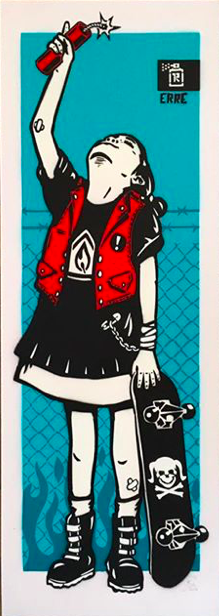 and everywhere now that distinctive teal&red is starting to appear.
and everywhere now that distinctive teal&red is starting to appear.
And Doris Salcedo – https://art21.org/artist/doris-salcedo/. #AquiFaltaAlguien. Los Desaparecidos. In the conflict years between 1958 and 2015, an estimated 83,000 Colombians were forcibly disappeared. In a country of ~50 million people, walk the zeros down: 50,000,000; 5,000,000; 500,000; 50,000 and then roughly × 1.5 = 0.15% of the population. In the United States, that would represent approximately half a million people – something like the population of southern Maine. Gone. How do you honor the Disappeared? By doing what you can and making art. This piece (or this installation or this I’m-not-sure-how-you-describe-something-this-profound) by Doris Salcedo is so far beyond beautiful that i’m just gonna sit here and keep bearing witness to genius: https://www.npr.org/2018/11/06/663473304/in-colombia-artist-renders-tons-of-rebel-guns-into-floor-tiles
[here’s more information if you’d like some context for the numbers:
Ralph Eugene Meatyard – https://www.icp.org/browse/archive/constituents/ralph-eugene-meatyard?all/all/all/all/0 – Bates College Museum of Art – October 25, 2019 – March 28, 2020. Maybe everybody gets his work, I don’t know, but if you grew up at all in the rural South, that queasiness of ghosts and God and madness that he explores is inside you too and you feel it babble. His finest images have that shatterstruck to the light – somehow all angels in the hollows and the dusty silence. Those images are a memory of a time and a place in U.S. history too violent to evoke nostalgia. When you drive that landscape now you still feel the terror.
Dominga Torres Teherán y Ruby Rumié – https://www.nohrahaimegallery.com/ruby-rumie.html – Tejiendo Calle – I am drowning in their faces. ‘Weaving Streets‘ – such a lovely slanging for that back and forth and around. And for what is made of race and class and gender and the visibility of what – of who – are so present and so vibrant in their costume as to be invisible. And so the inversion – the women in the dress – not the dress itself. And a presence that is louder in the autonomy of silence than in any technicolor shout of a backdrop collective. Gorgeous.
Alison Hildreth – https://www.alisonhildreth.com – I first saw her work one night coming home across Portland – I’d passed the public library lost in thought and just idly watching my own feet walking and had suddenly looked up into a falling water alchemy of angels.That cascade – amulets and puppet-winged spirits and steampunk treasures -found me when I needed it and isn’t that what art does better than anything else the spirit creates? Her work was and is and remains gorgeous and intricate and so marvelously and wonderfully strange.
Dior Vargas – People of Color & Mental Illness Photo Project –http://diorvargas.com/poc-mental-illness/ – Centering up. As she writes: “This photo project stems from the lack of media representation of POC (people of color) and mental illness. There are tons of articles that list people with depression and other mental illnesses but you rarely see someone who looks like you. We need to change the way this is represented. This is not something to be ashamed about. We need to confront and end the stigma. This is a NOT a White person’s disease. This is a reality for so many people in our community.”
Open letter to Mayor Strimling. Between January 2017 and January 2018, 407 individuals died of drug-related overdoses in Maine. This number – as reported by the U.S. Centers for Disease Control and Prevention – is likely conservative, meaning the actual number of Mainers who died of drug-related overdoses during this period is even higher. Safe injection sites won’t solve the opioid crisis, but they – along with needle exchange programs (https://www.portlandmaine.gov/866/Needle-Exchange) – are a significant step in the right direction of evolving our thinking on injecting drug use.
IDU_HRM_Merritt_HPP-507 – Injecting Drug Use (IDU) and the Harm Reduction Model (HRM). Conceptually, one of the more significant impediments to the introduction of harm reduction programs is the challenge these programs pose to social constructs regarding the ‘costs’ of behavior. In many countries, drug policies are developed and enforced from the vantage of protecting society from drug addiction (or, more specifically, from behaviors associated with the pursuit of addictive drugs) rather than from the vantage of protecting people who use drugs from associated harms. The HRM insists, in contrast, that an individual who injects drugs has as much right to protection from HIV/AIDS, Hepatitis C (HVC), and other blood-borne infections as an individual who does not inject drugs. Where the harm reduction approach intersects with street policing there is often a tension between the human desire to attribute social blame and the ability to place social discomforts associated with a set of behaviors within the appropriate context of structural power imbalances. Put simply, although it may be their reality, it is not the drug user’s fault that they experience more police violence than non-drug users. While the addiction behavior may arise with the user, the violence that they (and their community) experience as the result of that addiction behavior originates, at least in part, with the magnification of underlying cultural biases that can accompany law enforcement.
https://www.youtube.com/watch?v=P7rFMO7ODBk Faces Places. Each face tells a story. Agnes Varda and JR. This train will go places you’ve never been.
https://www.sheepjones.com/ Sheep Jones. Just yes. All the way down and through. They’re even richer and more intricately fascinating up close. And the finest and strangest ones aren’t even on her site. They’re wildness itself. [And more of her glorious work here: https://www.mainefarmlandtrust.org/artists/Sheep_Jones/39054/mygallery]
Diseases of Poverty and the 10/90 Gap. InternationalPolicyNetwork Access. Access. Access. The problem is access. As the World Health Organization (WHO) notes: [m]ost of the disease burden in low-income countries finds its roots in the consequences of poverty, such as poor nutrition, indoor air pollution and lack of access to proper sanitation and health education. Diseases associated with poverty account for 45% of the disease burden in the poorest countries (as compared to 6% of the disease burden in high-income countries), however, nearly all of these deaths are either treatable with existing medicines or preventable in the first place. It isn’t the fault of individuals where they were born and are trying to live or improve their lives; that is no more preordained than is the random good fortune of having been born in a high-income country. Even (somehow and hypothetically) setting aside the extent to which ‘First World-ness’ is an active creator of poverty in much of the rest of the world, it is hubris on the part of high-income countries to believe or behave otherwise.
Over Your Cities Grass Will Grow https://www.youtube.com/watch?v=6zf63U1Rk0w Anselm Kiefer. The first painting of his that I saw was of sunflowers with their heads bowed down in winter. He’d studded the pigment with the black split hulls of seeds. The second painting of his that I saw was as tall as the ceiling and it sifted down the charred edges of a burnt book. The third painting of his that I saw was of the night sky and God’s own infinite eye watching down. His work is where my mind has wandered off to when I go looking for it and it’s gone.
ShoutOut to the anonymous donor who purchased my 4 images (4 square) + the works of a second artist from the Maine Artists show as donation to the St. Joseph Healthcare Regional Breast Care Center in Bangor, ME. https://www.stjoeshealing.org/our-services/specialty-services/regional-breast-care-center Thank you. And to St. Joseph’s for inviting, curating, and supporting that beautiful exhibition.
HPP_583_The Mines – Global Health – this is where my head’s been at this semester. The Mines. Huancavelica, Peru and Potosi, Bolivia. This is half of the mercury/silver story. Or who knows what percentage – this is the part of the story that happened [or happens or is still happening, because so many of the cultural and toxicological impacts of this story are on-going] in the Andes. One fact: based on available records, almost 1/3 of the individuals conscripted to work the mercury mine in Huancavelica died as the direct result of their term of service. What is the legacy of the Colonial era in Latin America? Trauma. The legacy is trauma. These folks are working on that legacy now: http://www.ehcouncil.org
http://brandanodums.com/about/ Brandon Odums and Studio BE. Let this move your heart. As he writes: Project BE was an illegal art experience. Studio BE is a 35,000 sq ft warehouse in the bywater neighborhood of New Orleans, LA. Baptized when the Levees Broke. You are Still Here. Alchemist. And my personal favorite (for anything that that’s worth): I am my Ancestors Wildest Dreams. Just sitting here letting that one sink in. Lordy. Amor, Luz y Paz. From the root grows the revolution.
https://www.southgatefaces.com Southgate Faces. Enter here. Portraits by Heather Perry of the men and women who work at Bath Iron Works – one of the oldest shipyards in North America. I’ve worked on and around boats and in yards off and on for much of my adult life and so part of what I love about this series is that the faces are familiar. Not so much the individuals, but their faces. Just people. And that grit. And, as Heather says, that site so large it can somehow sit right there in your blindspot.
http://www.pacificstandardtime.org There will be art. LA/LA: A Celebration Beyond Borders. The political and personal effects of exile, migration, immigration and identity. This is the art of Revolution and of Ritual. This is Sara Castrejon and Graciela Iturbide and Tatiana Parker. This is activitism. And displacement. And dissonance. And challenge. And celebration. And inspiration. This what it means to push boundaries.
While I totally get the whole pink ribbon thing, I also think that it (+ all those pink teddy bears) can feel infantilizing to grown women. As is the part where people tell you that maintaining a ‘positive outlook’ is vital for your recovery. It isn’t – there are even studies out there showing that people who get pissed off and curse their way through treatment do no worse than people who meditate and look on the bright side. I had cancer in my 30s and cancer really kind of sucks – sometimes stompy boot energy is what you need to still feel like you’re you and not just a patient with a meds routine and a fear as vast and roiling as the surface of the sun. So, thinking about all that we made these tags. And handed them out. And up they went. And…well, let me know if you need some personal stompy boot energy – I’d be happy to send you some if it might help.
And this – because it belongs here: http://www.oncotypedx.com/ Oncotype DX. 2006. A new gene expression array designed to assess whether chemotherapy would provide additional benefit beyond radiation and 5 years of hormone therapy (for pre-menopausal women that means Tamoxifen). 21 tumor – specific genes from a tumor sample. A retrospective study at that point – how did assay results compare with outcomes for patients already more than 5 years out for diagnosis and treatment. I’d read about it in the NYTimes and asked my doctor about it. She’d never done one. EMMC had never done one. We did one. Mine. I’d read the study and trusted it. And then trusted the results and made my decision. Coming off Tamoxifen 5 years later the world went all bright with fear again. But now I’m past the 5 year mark after that, and I’m still here. And through that bottleneck. and a lucky little punkgirl. ❤
http://bwphotolabs.com Deirdre Kelly — I totally dig her, and also her skills. She develops my film. Thanks, Deirdre! If you need film developed (or custom printing – any format – or old images restored), she rocks.
http://www.elle.com/fashion/celebrity-style/news/g30151/pirelli-2018-all-black-calendar/ The 2018 Pirelli Calendar. And this exploration of a photo shoot with ‘equality and empowerment’ as the core. https://www.nytimes.com/2017/07/20/fashion/pirelli-2018-calendar-black-alice-in-wonderland.html. “The story of Alice has been told so many times and in so many ways, but always with a White cast,” [Tim] Walker [the photographer] continued. “There has never been a Black Alice, so I wanted to push how fictional fantasy figures can be represented and explore evolving ideas of beauty.” There is so much about this that is thrilling. The gorgeous photography is only a part of it. Wow.
http://www.paularaegibson.com Paula Rae Gibson. “I lost my spleen, gained nine pints of Ecuadorian blood – this caused a bit of an overflow of emotion, a tsunami actually which I poured into work and the darkroom. Everything I had ever felt all my life without even knowing ’til then, came to the surface and it almost killed me all over again.” Oh yeah. This wildstrange world. Oh yeah. Once you start there is no stopping. Oh yeah. She shoots analog.
http://www.smithsonianmag.com/travel/old-russian-empire-color-photos-180950229/ Wow. Sergei Mikhailovich Prokudin-Gorskii (1863-1944) Three exposures. Three filters. And a projection. And 2,433 prints of a world that had already vanished by the time he died. (http://www.loc.gov/pictures/collection/prok/) Check this out.
Merritt_Vaccine Safety and the Controversy over Thimerosal EHS_565-02 – Spring 2017. Vaccines are interesting – whereas they’re voluntary in that you’re not required by Federal law to receive them, they are compulsory in that they’re required for participation in various aspects of public life. This requirement makes exposure to vaccine ingredients somewhat unavoidable, and while vaccines are overwhelmingly safe, risks do accrue to the individual. In the case of vaccines that contained Thimerosal, that those individuals were infants has created a controversy that no amount of data seems able to quell. The current U.S. President’s views on vaccine safety remind me of former President Bush’s observation that air quality has gotten so good in the U.S. that we no longer need the Clean Air Act. The list of diseases that are no longer significant public health concerns in this country is as long as it is because of vaccines, not in spite of them. Thinking about that these days.
http://time.com/4646116/film-photography-inspiration/ I ❤ shooting film. It’s about respecting the practice and the history. And the approach to discipline. LaToya Ruby Frazier writes ““[i]f I want my work to have a visual language that’s in conversation with the social documentary work of the 20th century then I need to use that medium and their tools.” That’s it. Anything else – including practicality as an end in and of itself – is the wrong metric. Go shoot.
http://www.mobileprintpower.com Mobile Print Power. I think I’m in love. Currently exhibiting Soñamos Sentirnos Libres: Making it Real at Maine College of Art (MECA) here in Portland. Also hosting two community workshops – February 23rd (12 – 2 pm) and February 24th (3:30 – 6:30 pm) – to explore community, the immigrant identity and the role of the artist. We all belong.
Mack and Wrase_2017. A Burgeoning Crisis? A Nationwide Assessment of the Geography of Water Affordability in the United States. They write: regarding the risk for losing access to affordable and safe drinking water, 81% of high-risk Census tracts are located in urbanized areas and the states with the greatest percentage of high-risk tracts include Mississippi, Louisiana, Alabama, Kentucky, and Arkansas. Race/Ethnicity × socio-economic access × that invisibility of infrastructure – this is the problem.
http://www.une.edu/news/2016/une-biddeford-campus-art-gallery-presents-“zero-los-desplazados-de-colombia-photography-black-and Zero. Los Desplazados. Photographs from Colombia by Robert Pennington. January 26 – March 1, 2017. UNE Art Gallery in the Ketchum Library – UNE Biddeford Campus – 11 Hills Beach Road, Biddeford, ME.
http://mattfitzgerald.org/how-bad-do-you-want-it/ This is a book about donuts. Just kidding. It’s not about the yellow jersey, he writes, and it’s true. But it is about the bike.
http://transnational-queer-underground.net Transnational Queer Underground. Anti-capitalist. d.i.y. not-for-profit. A place for blogs, books, music, movies, zines. Check out #thegalleryproject and spark.it.up if it’s yours. Or forget the if. Spark.it.up. It’s yours.
http://www.elle.com/culture/books/g29030/art-movement/ The Art of Movement. Because Ken Browar and Deborah Ory. Because the NYC Dance Project (http://www.nycdanceproject.com). Because the shape of it all is beyond beautiful. Because after years with a personal yoga practice I can at least feel the edge of it flex. Because that drishti. Because that discipline. Because No. 6. Because if it’s not difficult, what’s the point?
http://www.lynnkarlinphoto.com/#a=0&at=0&mi=2&pt=1&pi=10000&s=1&p=1 Lynn Karlin. The Tray Series. oh. my. lord. The pattern-loving kink in my brain is going happily apeshit. Beets! Radishes! Peas! Squash blossoms! I don’t know what those things are but they’re beautiful! And those things – hard-boiled egg slicers…maybe?! I don’t know. I love these.
http://www.bu.edu/prc/ Photographic Resource Center at Boston University. 40th Anniversary year and as fantastic and helpful as they’ve always been. They’re now offering portfolio reviews again. If you join – $30 – $50/yr with all kinds of benefits – one review a year is on them (thanks to Panopticon Imaging – http://www.panopticonimaging.com). [Shout out to Rockland, MA here too, of course – hometown of His X. I don’t need college, he’d said, way way back in the day. I’m good. Well, there’s the shoe factory, Nana had replied. Knock yourself out.]
http://www.mustafahabdulaziz.com Mustafah Abdulaziz. Water. Verse 8 and the Highest Good. This is everything. This is the longterm project. Where it is now is Photoville [http://www.photoville.com], Brooklyn Bridge Park, NYC. Waterways and Water Challenges. And that collection in the Containers so fine you gotta go outside afterwards and run it all off [http://www.photoville.com/container-exhibitions/].
Fall 2016. Epi630 Hypothetical epidemiology here – the problem is real – diarrheal diseases represent a significant cause of illness for children < 5 years old (y.o.) in many low- and moderate- development countries, and may be responsible for ~ 20% of deaths in this cohort. The means to address this problem – in terms of the duration and budget proposed herein, are as per class requirements; in terms of approach, however, this paper highlights the crux of the challenge with water treatment – the nuts and bolts of low cost water purification are known and are rarely the limiting factor in the process. The challenge instead is in offering solutions that mesh with how we all already behave, rather than assuming that behavior will immediately change to support an introduced solution. Behavior can’t be seen as outside the project. Behavior is the project.
http://www.elle.com/culture/career-politics/a37628/flint-michigan-water-crisis-latoya-ruby-frazier/#. Latoya Ruby Frazier. Flint is Family. Shout it out. This is social documentary photography. And this is Latoya Ruby Frazier – 2015 MacArthur Genius Grant winner. (http://www.latoyarubyfrazier.com) Rarely do disenfranchised subjects speak for themselves or document the crisis that is affecting them. She continues to tell the visual autobiography. This is what the camera’s for.
[and this: Flint, MI and the Emergence of Community Social Capital I wrote it this summer [2016] for a class I was taking. It’s just my opinion, of course, but it’s what’s been happening in Flint, MI., and everywhere really. From the vantage of how we think about community and inclusion and also how we don’t even see infrastructure until something goes wrong. This is crisis on many levels and we need to start paying closer attention. This is what the science and engineering can be for.]
http://www.elle.com/culture/music/a37564/kathleen-hanna-julie-ruin-interview/ Let in the goodness when it happens. I ❤ Kathleen Hanna. Welcome back to the front and center, TNT.
http://www.nytimes.com/2016/06/26/style/bill-cunningham-legendary-times-fashion-photographer-dies-at-87.html?_r=0 Bill Cunningham. (1929 – 2016). The pixie on the bicycle. Rest In (a very street stylish) Peace.
http://khalikallah.com Khalik Allah. What this man does with one piece of earth is an astounding thing – all angles and perspective and that energy that feels both huckster and holy, if you know what I mean. I’ve been following 125th & Lexington for years now – there may be no finer pleasure than watching talented people do their thing. The camera is a healing mechanism, he says. Let me photograph it and take it away from you. Praise.
http://www.all-about-photo.com All kinds of quality here. Masters. Modern. Emerging. How to. Why to. When to. What to see. Where to see it. Most recently, this interview with Norma Quintana: http://www.all-about-photo.com/article.php?title=norma-quintana-circus-a-traveling-life&id=178 about Circus Chimera. [Plus her shout-out to Graciela Iturbide [http://www.icp.org/browse/archive/constituents/graciela-iturbide?all/all/all/all/0] who’s got that something wildspooky in overdrive.]
http://www.palanimohan.com Palani Mohan. Hunting with Eagles. Vanishing Giants. Hidden Faces of India. our world. our beautiful terrible world. Texture so rich it crackles off the pages. Gentleness in the touch of things – right there on the forehead, maybe – but that roughness too. That complicated relationship to reverence. And to sentimentality. And that challenge, always, for the viewer, to consider the why. And the how. And the details.
Perfect and Unrehearsed. Henri Cartier-Bresson. The master of what Alex Webb calls “the uncertainty and mystery of collaborating with the world as a street photographer.” It is a collaboration – without the street there are no images. Without the images there is no record. And the geometry that makes it work is the v. finest in predicament math. The photographer, as T. Cole writes, has to be there to begin with, tuned in and tuned up, active. The rest is fate.
http://lens.blogs.nytimes.com/2015/03/23/sebastio-salgados-journey-from-brazil-to-the-world/?_r=0 Sebastiao Salgado. And Wim Wenders about him: Salt of the Earth – http://www.firstshowing.net/2015/watch-trailer-for-sebastiao-salgados-the-salt-of-the-earth-doc/ Holy cow. That gold mine. And the braided stream of reindeer and Sami. And the Altiplano. And that rush of wonder. There is no way back.
http://www.magnumphotos.com/Package/2K1HRG6N46IZ An Image that Changed Everything. Such beautiful work to be done.
http://www.maryellenmark.com/index.html Mary Ellen Mark. (March 20, 1940 – May 25, 2015). Pick up your camera and start shooting. It doesn’t matter what you shoot. It doesn’t matter if you’ve never picked up a camera before in your life. If you need help getting started, don’t be afraid to ask. If you want to build a body of work, everything else is an excuse. She got it. Magnificently. I ❤ Indian Circus. R.I.P.
http://www.lensculture.com/articles/norma-i-quintana-circus-a-traveling-life Circus Chimera. 10 years. She gets it: physical reality is what makes it beautiful. Dirt. Sweat. Chalk. Paint. Scales. Feathers. BIrd Boys. That gesture and those eyes. What she calls that purposeful grace.
http://www.nytimes.com/interactive/2014/10/03/magazine/01-brown-sisters-forty-years.html?_r=0 40 portraits in 40 years. So much gentle protection of each other as they grow older. So much directness in their beautiful beautiful faces. [04/18 – And so incredibly too bad that Nicholas Nixon is such a self-important fool. Asking your students to analyze photographs of your own penis doesn’t somehow make you ‘boundary pushing’ or extra-ordinarily talented. What it makes you is an *sshole whose juvenile narcissistic behavior deserves to be rewarded by having your job handed directly to somebody equally talented and significantly more self-aware. Ick.]
http://www.womensmotoexhibit.com/ oh hell yes. this. did i say oh hell yes? i meant it. this. i might be in there somewhere. i’m not sure. i honestly don’t remember what happened.
Josef Koudelka. The Master. he wrote ‘I would like to see everything. I want to be the view itself.’ His work is the bar and Black Triangle remains silently godawful heartbreaking. he’s still at it. sometimes he shoots with three cameras looped around his neck – one each focused up on the near-ground, mid-ground, far-ground. there are worse people to admire than this vagabond Czech.
http://www.edwardburtynsky.com/ Water. no, Quarries. no, Water. no, Quarries. he makes the pattern-loving kink in my brain happily start paying attention. mostly aerial views. large format. Stepwell #4. that one does it. well, and so does Cerro Prieto. and Rice Terraces #2. And Bay of Cadiz. you get the idea. just all kinds of beautiful work. just all kinds of mmmmmmm with that stone and flow.
http://unlessyouwill.com/ABOUT go ahead. pick one at random and dive in. i come here for a jolt or to have my brain petted or to think about what works and what doesn’t and why. they like writing about photography too. really. go ahead.
http://www.nadavkander.com/# i think the first images of his i saw were of Chernobyl [Half Life]. opaque. that’s the first word that comes to mind, like the background was washed in milk. and then the things he does with dereliction – i mean, it’s not like the Russians have cornered the market on abandoning property, but, still – the scale of it all…
http://www.jr-art.net/ ever need inspiration? check him out. i love this man’s work. because it’s not really about him, you know? it’s about swinging big and pasting it up. he just goes and makes that shit happen.
http://noorimages.com/ most fantastic. if you ever need to suddenly remember the size of the world, look here. it’ll fix you quick.
personal ink (p.ink)–kick ass tattoo artists and the even kick(er) ass women they ink: http://www.pinterest.com/personalink/
one man. one pink tutu. a massive amount of love: http://www.thetutuproject.com/about/

